Note: This page is a constant work-in-progress, with new information and corrections being made all the time. To search on the “1930-1959 Timeline” for any particular year, person, event, business, shop etc, simply press CTRL+F and type in the thing you are looking for in the small box that will appear on the screen.
1930

Chemist Charles Hembrow is now running his Beechworth Pharmacy in Camp Street. He uses his own bottles to dispense his medicines. (These bottle are now collector’s items – above.) Hembrow had previously beenthe secretary-manager and resident pharmacist of the Ovens District Hospital.

1930

Cyclists gather in town to compete in a big Beechworth Bicycle Race.
1930 – Mar 17

21-year-old Cameron William McBean (and a Mr O’Brien, his business partner at the time) opens the Reliance Garage on Ford Street, a few doors south of the Commercial Hotel, selling ‘Plume’ petrol. At the height of World War Two in 1942, Cameron McBean will enlist in the Australian Army, attaining the rank of Lance Corporal.
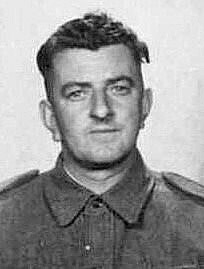
1930 – Jun 15

Causing a traffic jam on the Hume Highway, 17,000 spectators turn out to witness British aviatrix Amy Johnson – on her solo flight between England and Australia – make her only stopover in Victoria (on her ‘victory lap’ from Canberra to Melbourne) at the tiny Bowser airstrip opposite Bowser Railway Station (formerly Beechworth Junction). She is afforded an official welcome party – led by Councillor Mather, Mayor of Wangaratta – who escorts her from her aircraft ‘Jason’ for celebrations at Wangaratta’s Hotel Pinsent (formerly the Royal Hotel).
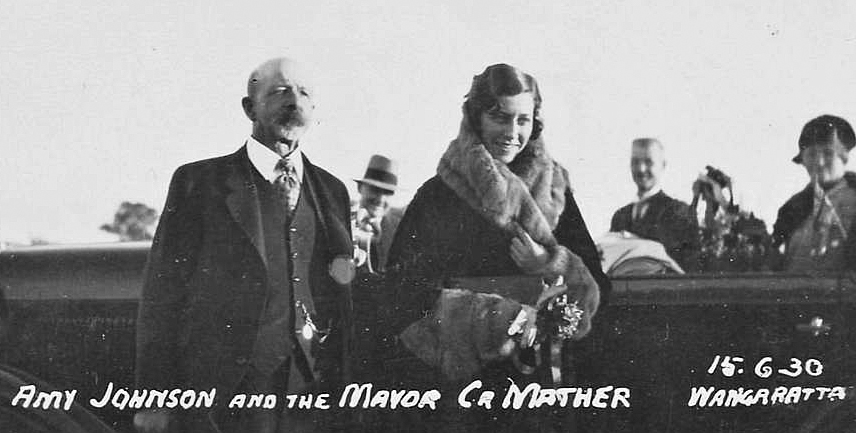
1930 – Jul 10

Copies of the Melbourne Herald newspaper are dropped over Beechworth by an aeroplane! The July 9 edition of the afternoon paper had carried a special feature about Beechworth as a tourist resort so, the following day, a plane flown by Pilot Officer Kinnear departs Essendon Airport at 10 am and flies over Beechworth just after midday dropping copies of the special edition from the sky, before flying over nearby Stanley, dropping more copies of the Herald on the Stanley school oval. Having successfully completed his ‘publicity drops’, Kinnear lands his plane back in Melbourne just after 4 pm. At the time, a copy of the Herald sells for 1½ Pence.
1930 – Jul

The Ovens and Murray Advertiser is purchased by Raymond Albert Zwar and Bernard Michael Zwar. The brothers will own and manage the newspaper and printing business for 16 years, before selling it 1946.
1930 – Oct 31

Former Billson’s Brewery owner Alfred Arthur ‘Bosher’ Billson dies of coronary vascular disease at the age of 72 at his home ‘Wooragee’ in Toorak. (‘Wooragee’ is named after the place his father George Billson had built a hotel in the 1850s.) ‘Bosher’ is survived by his wife Laura and their three sons and two daughters, and leaves an estate valued at £6,047.
| His older brother George Henry Billson – who at had served as the Mayor of Albury in NSW – moves to ‘Dun Lappie’ in Glenhuntly Road, Elsternwick in 1901, and elected to the St. Kilda City Council (1901-11) serving as Mayor in 1909 where he is responsible for the development of the St Kilda Esplanade. He also establishes another highly successful aerated water manufacturing business on Brighton Road, Elsternwick. He dies in 1927 at the age of 83. |
1930 – Dec 6

42-year-old Thomas ‘Tom’ Parkinson establishes the first Wangaratta to Beechworth Motor Car Service. This new and necessary service has been motivated by the discontinuation of the regular weekend night train service to Beechworth. Parkinson agrees to meet the night train from Melbourne at Wangaratta Station on Saturdays and provide a road service in one of his ‘Buick’ cars back to Beechworth for 10 shillings a head.
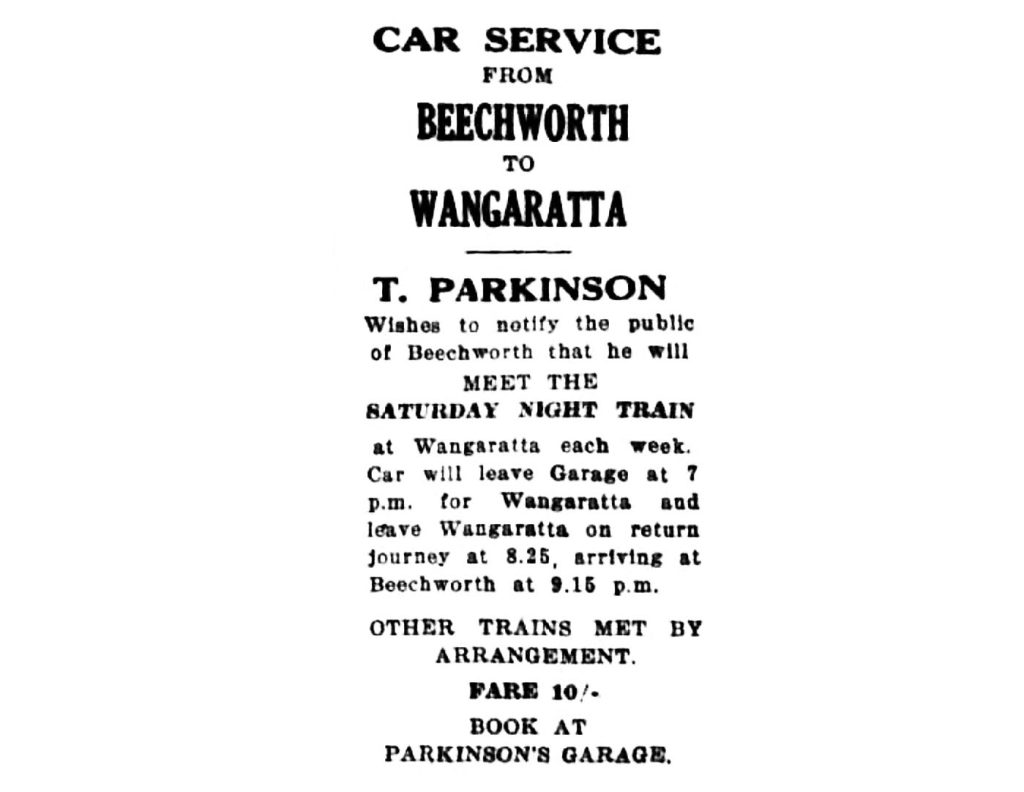

1931 – Jan 22
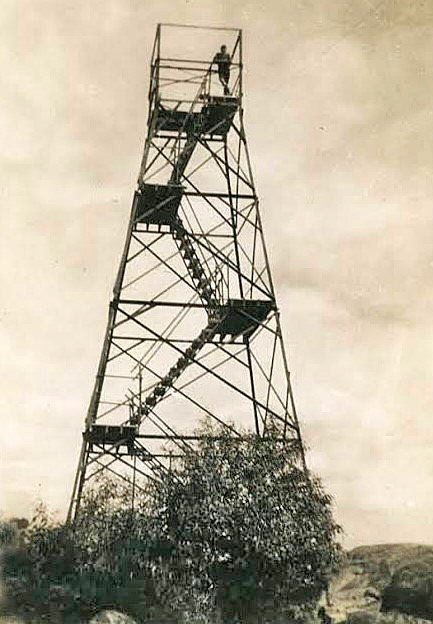
At Mt. Stanley, located around 11km from Beechworth, a 14-metre tower is completed. Constructed over many weekend volunteer ‘working-bees’, the material for the tower is provided by the Forest Commission. While the tower’s prime function will be for fire observation and protection, its spectacular views will also make it a popular scenic viewing platform.

| A cabin will be added on top in 1948 and then replaced twice – in 1968 and 1984. The Mt Stanley Tower is last used in 1991 with the cabin removed in 1995 and relocated to the Mt Pilot Tower. Fire detection from Mt. Stanley is now carried out in a new Telecommunication Tower, built in the 1990s. |
1931 – Jan 22

On the same day as Isaac Isaacs is sworn in as Australia’s first locally-born Governor General, the official opening of the newly completed Mt. Stanley Lookout Tower is held, with the ribbon being cut by Beechworth’s Sarah Foster, mother of Beechworth-born legal luminary Judge Alfred William Foster Jnr.
1931 – Apr 7
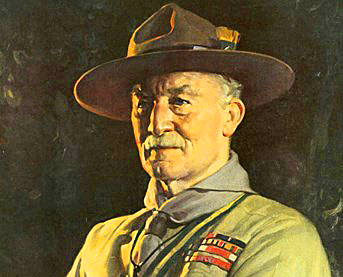
The founder of the Boy Scouts, 74-year-old Lord Baden-Powell and his 42-year-old wife Olave St Clair Baden-Powell travel through Beechworth in a chauffeur-driven motor car on their way back to Melbourne after visiting their son Peter in the nearby Kiewa Valley. The Baden-Powell’s car even stops to fill up with petrol in Beechworth but, much to the dismay of the 1st Beechworth Scout Group – established in 1925 – nobody is notified of the brief visit, and the boys and their Scout Leader Keith Zwar are disappointed to find out later that they had missed seeing the great man. As one wag commented “the scouts – who should always ‘Be Prepared’ – were not”!
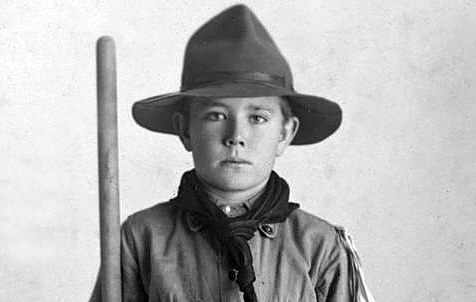
1931 – Aug

The Railway Hotel is purchased by Walter John Nicholas who has plans to expand the business. In 1935 he will add a second storey to the building and change its name to the Hotel Nicholas. The popular hotel on the corner of Camp and High Streets has since been restored to reflect the period of its construction.

1931 – Dec
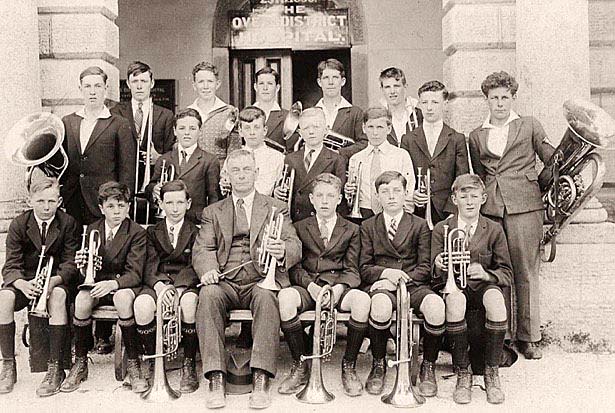
The popular Beechworth School Brass Band – led by Tom Tansey – perform a concert at Christmas.
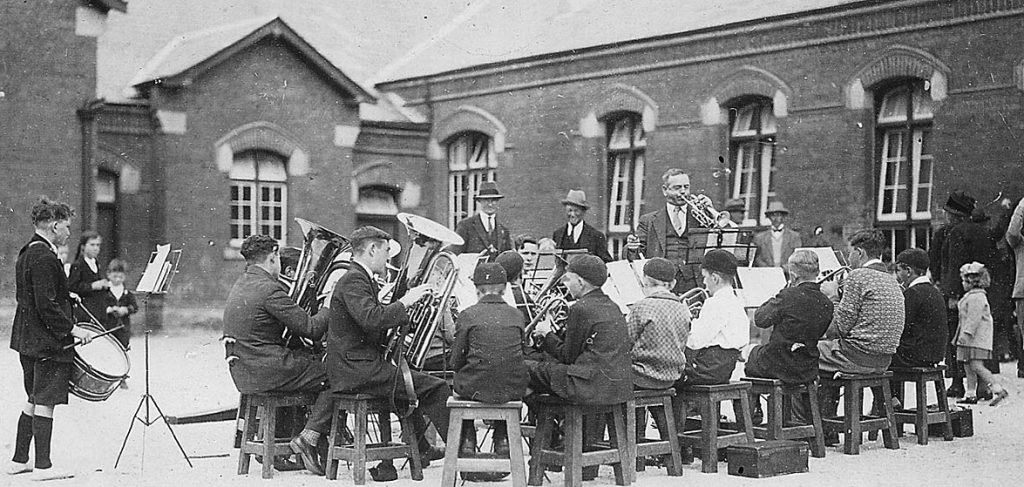
1932 – Jan
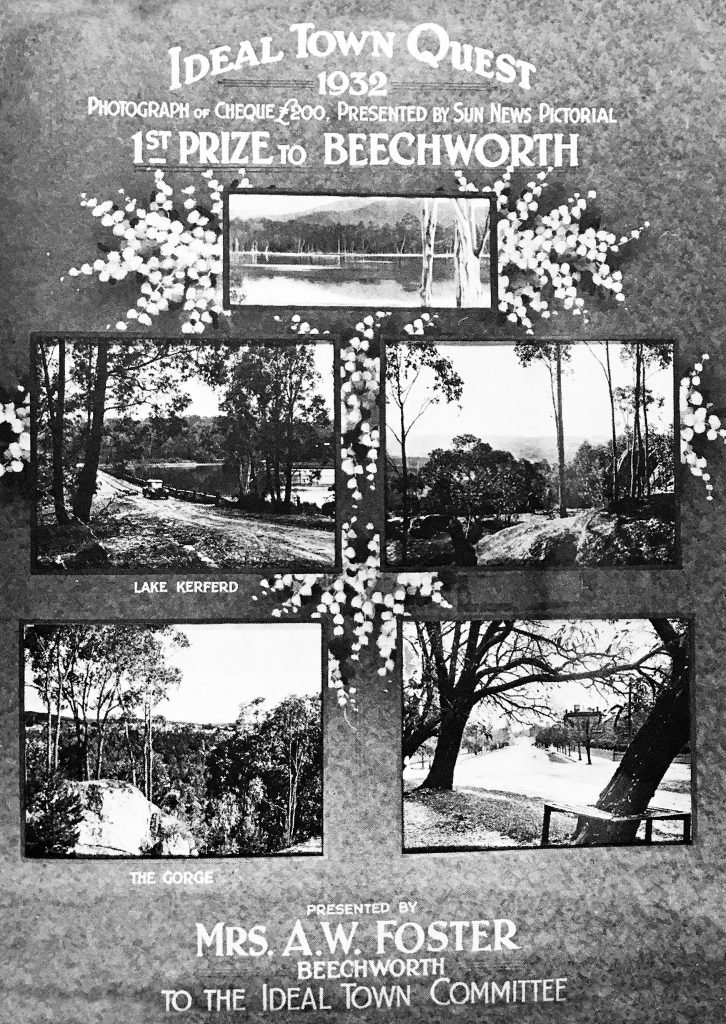
For a second time, Beechworth wins the Sun News Pictorial’s “Ideal Town Quest” competition, with Sarah Foster – mother of Beechworth-born legal luminary Judge Alfred William Foster Jnr – presenting the Beechworth Ideal Town Committee with a cheque for £200. (Frankston comes in at second place with the town of Nhill coming third.)

1932 – Mar 24-29

To celebrate the Sun News Pictorial naming Beechworth the “Ideal Town” again, the third “Back to Beechworth” festival is held over Easter. Organised again by Beechworth Shire engineer (and secretary of the ‘Forward Beechworth Committee’), Leslie Herbert Sambell and Beechworth Shire secretary Charles Algernon Reynolds, the varied program includes a Monster Picnic, Easter Monday Sports, Motor Gymkhana, Swimming Carnival, Fireworks Display, Reunions, Back to School event, Grand Ball, a Fancy Dress Procession, and a big cricket match. Arrangements are made for the reception of ‘Old Beechworthites’ to travel back home on a special train that leaves Melbourne on March 24th. Beechworth is the only town to claim the honour of being named ‘Ideal Town’ for a second time.


| Due to inclement weather, the Town Band concert, under Bandmaster Tom Tansey, is relocated from the shores of Lake Sambell to the ‘Federal Hall’. The concert includes a range of musical numbers and also features an item by a visiting troop of boy scouts from Yarrawonga, including an exhibition of ‘rope coiling’. Then, on Easter Monday, a large procession makes its way along Ford Street to Baarmutha Park, where a motor gymkhana is held. On the last night, to end the festival, a torchlight procession winds its way through town to Queen Victoria Park, to watch an outdoor screening of the 12 minute silent film “Back to Beechworth: The Ideal Town” (above) followed by spectacular fireworks display which lights up the sky over Beechworth. |
1932 – Jul 31
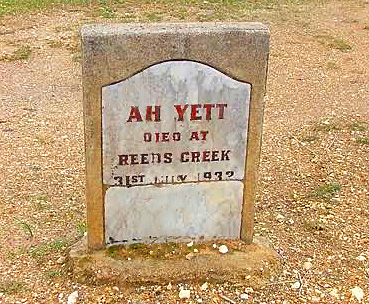
‘Henry’ Ah Yett – reportedly 105-years-old – dies at Reid’s Creek. The elderly Chinese gentleman is a well-known identity of Beechworth and the district, having lived in the area for over 70 years and is known as the last of Beechworth’s “Joss House Keepers”. ‘Henry’ had arrived in Beechworth in the 1860s and digs for gold for a number of years before establishing a market garden at Reid’s Creek and regularly delivers his vegetables to numerous customers in Beechworth and Chiltern. Also skilled in the use of herbs for medicinal purposes, he is noted for his honesty and his geniality, and his kindness to children is proverbial. He will be the second-to-last Chinese person buried in the ‘Chinese Section’ of the Beechworth Cemetery.
1932

Lake Kerferd, created in 1862, is Beechworth’s main water supply and is still a popular summer place for locals and visitors who can make the 4 mile (6.5km) trip from town (below). The lake has a capacity of 200 million gallons of water.

1933

The Borough of Wangaratta continues to grow and now has a population of 4,795, while the residents of the Beechworth township number 2,852.
1934

Anyone for Tennis? With the recent addition of a new asphalt court at the Town Tennis Club on the corner of Kars and Finch Streets, Beechworth now has six tennis clubs, including those at the Methodist and Presbyterian Church grounds, the Lawn Tennis Club, as well as the court at the Mayday Hills Asylum (below).

1934 – Oct 3
33 km for Beechworth, His Majesty’s Theatre – which adjoins the Commercial Hotel at 48-50 Murphy Street in Wangaratta – is reopened after being remodelled and refitted by North Eastern Theatres into the Plaza Cinema. Featuring all the latest cinema design features, including a large screen and a new, deep sloping balcony, it is officially opened by Wangaratta Mayor George Handley, alongside Beechworth’s own Albert Michael Zwar M.L.C.
| Said to be the largest theatre built in Victoria outside the metropolis when it opened in 1899, Nellie Melba performed at ‘His Majesty’s Theatre’ in Wangaratta to a capacity crowd of over 1,000 on 29 January 1908. In 1949, a second Wangaratta cinema – the ‘Orana’ – will open at 21 Reid Street, featuring 1,308 seats and then, in 1958, ‘Village Cinemas’ will establish the ‘Wangaratta Drive-In Cinema’. The ‘Plaza Cinema’ will cease showing films in February 1963 and be demolished in December 1969. |
1934
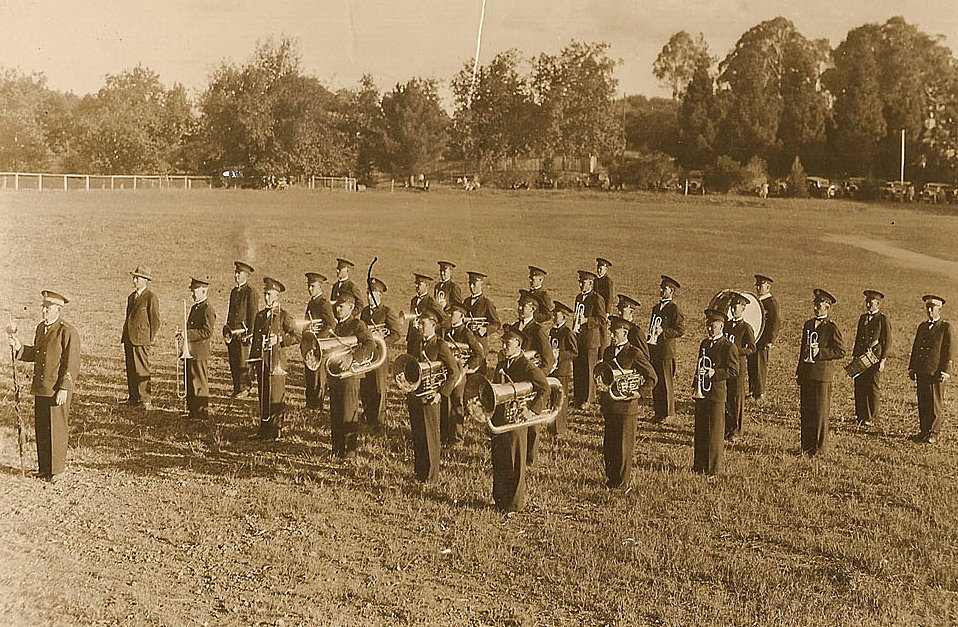
The Beechworth Town Brass Band is popular, performing at numerous functions and events, and regularly practice their music (and their marching!) at Baarmutha Park (above).
1834 – Dec

A “quickie” silent movie “The Adventures of Dot” is shot in and around Wangaratta by filmmaker Jack Mexeldo St. Ledger. Locals are chosen to appear in the film after winning their roles in a competition run by Wangaratta’s newly opened Plaza Theatre. Sylia Hardisty is cast to play ‘Dot’, a new schoolteacher who arrives by train in a country town and is romanced by two local lads, to be played by young locals Alan Dodsworth and Les Mears. The plot also involves the local fire brigade, school children and a printing office. It is a ‘quickie’ in every way – cast on December 1st, filming commences on December 2nd, with the completed film rushed to Wangaratta to screen to big crowds at the Plaza Theatre on December 18th!
| Texas-born filmmaker Jack Mexeldo St. Ledger travels Australia producing an amazing 47 local versions of ‘The Adventures of Dot’. The films follow exactly the same plot – new schoolteacher ‘Dot’ and her two rival lovers ‘Bill’ and ‘Andy’ – but features local talent and locations. Today, only four different versions of “The Adventures of Dot” still exist, all held at the ‘Australian National Film and Sound Archive’ in Canberra. Sadly, the Wangaratta version starring Sylia Hardisty is not among them. They’re from Grenfell, Temora and Young in New South Wales, and Glenelg in South Australia. |
1935 – Feb 23

After being taken ill Albert Michael Zwar – the ‘King of Beechworth’- is admitted to the Ovens District Hospital. Albert’s cousin, the brilliant surgeon Dr. Bernard Zwar, rushes to Beechworth to perform an urgent operation and there appears to be a slight improvement, but within hours – on Saturday the 23rd – he passes away, aged 71. Born in Beechworth in 1863, and living in the town for 47 years, Zwar receives a state funeral for his dedicated service to parliament and the people of Victoria, with members of Parliament and other Victorian dignitaries joining family and friends at the service, with 150 workers from the Beechworth Tannery marching in front of the funeral cortege.
| During the Depression years Albert Michael Zwar is responsible for the establishment of the Stanley pine forest and completing the southern end of the Gorge Road, making it a continuous circuit. He funds these projects by lobbying successfully for unemployment relief money. He is involved in almost every sports club in Beechworth, included the role of President of the ‘Beechworth Bowling Club’ for 26 years. Albert serves on the hospital board for 20 years and is a loyal supporter of the Church of England. A most generous contributor to all forms of charitable endeavour, he helps many young Beechworth locals get a start in business, his one stipulation being that his help remains anonymous. |
1935

TheTown Tennis Club and the Lawn Tennis Club amalgamate to form the Beechworth Lawn Tennis Club. The new club purchases a large piece of land between Albert Road and Tanswell Street and builds seven grass courts and four clay courts. Lighting of the courts will be added later along with a small clubhouse and a carpark.

| The Beechworth Tennis Courts will stay at this location until April 2019 when the land is sold for housing redevelopment and four new courts are built at the Baarmutha Park Sports Complex, opening in May 2022. |
1935

After almost 80 years in business, the Fiddes Quarry is finally closed. Blocks of granite – from along the hills lining the Woolshed goldfields – have been quarried and supplied to Beechworth by Donald Fiddes and Co since the mid-1850s. Mostly cut by hand using drills and hammering in wedges to split the rock, the heavy granite is then taken to town by horse or bullock wagons, eventually replaced by motor trucks. The founders of the company, Scottish-born brothers Donald and William Fiddes, had both died some years before. William Fiddes passed away at the age of 73 in 1906, and his older brother, architect Donald Fiddes, had passed away at his home on Finch Street on 11 September 1910, at the age of 85.

| Numerous important Beechworth landmarks are constructed using granite from the Fiddes Quarry including the Newton Bridge, the Courthouse, the disused and dismantled Ovens Hospital, the Powder Magazine. and the Beechworth Gaol (below). |
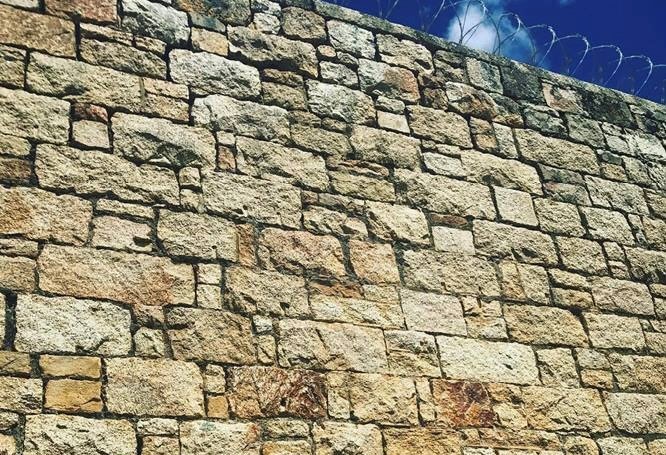
1935
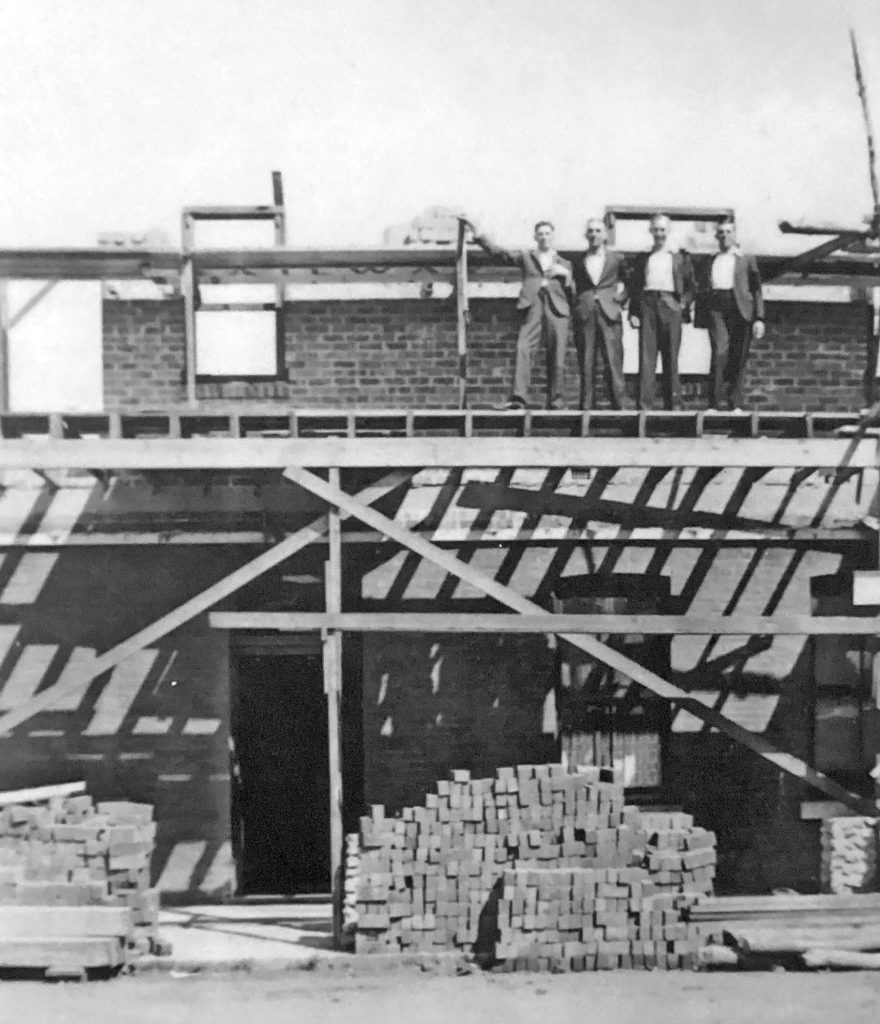
Walter John Nicholas, who had purchased the Railway Hotel in 1931 on the corner of Camp and High Streets, now adds second a storey to the hotel and renames it the Hotel Nicholas. The old adjoining shop next door on High Street is refitted to become the hotel’s new dining room and kitchen and Nicholas sets about establishing the hotel’s excellence in dining and hospitality.

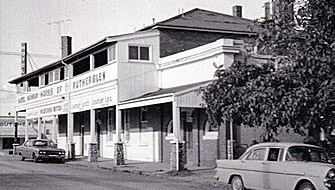
1935

Tom Tansey (who lives on Camp Street and teaches music at the Beechworth Higher Elementary School) and his friend Rex Thompson indulge in their hobby of sluicing for gold in Spring Creek. Even though the ‘rush’ is well and truly over, they continue looking for any alluvial gold still in the creek bed or trapped in the fissures in the rocks. They fill their barrows with soil and rocks then use water to wash away the relatively lighter soil and leave behind particles of gold, using either use a small round pan or a larger sluice. While they find “bits and piece”, they don’t make their fortune!
1935 – Jun

The 1871-built Oddfellows Hall on Loch Street – now renamed the Federal Theatre – continues to draw weekend crowds as it moves from screening silent films to ‘talkies’ like “The Kid From Spain” (above and below) supported by the Walt Disney cartoon “The Three Little Pigs”. The Federal Theatre will also screen some of the first Australian ‘talkies’.
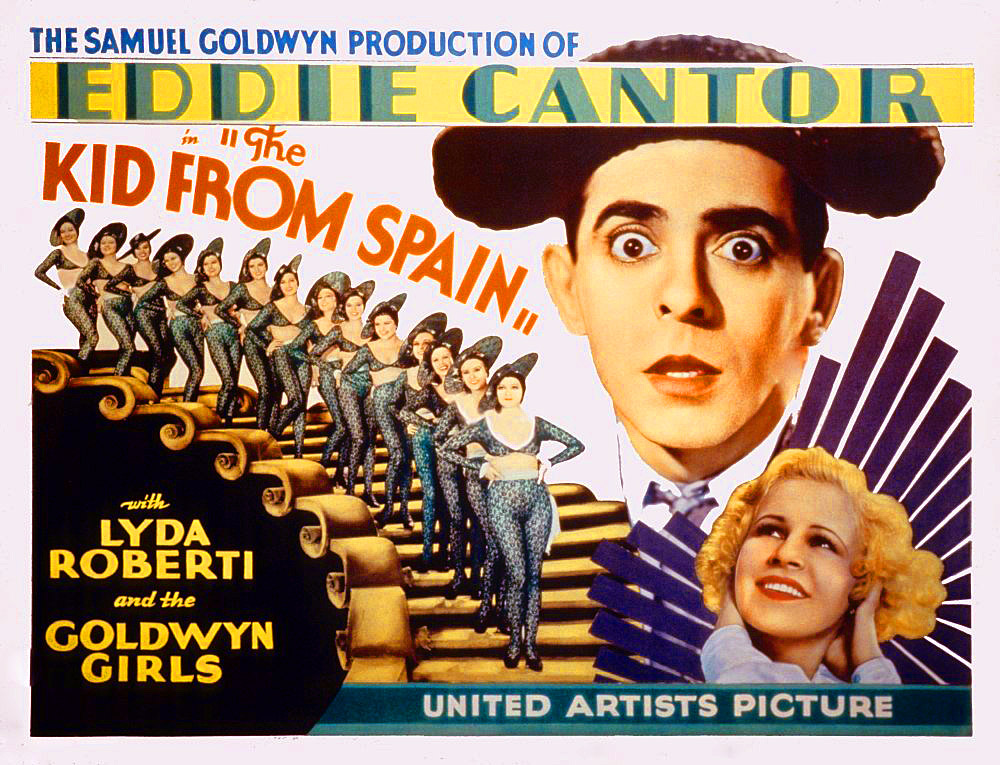
| The first Australian “talkie” feature film to begin production is “Out of the Shadows” in March 1930. A five-reel ‘society’ romance, the film is produced in Melbourne by Alexander Roy ‘Dick’ Harwood (as A.R. Howard) using a makeshift sound-on-disc recording system. Though the film is completed, the only set of wax discs buckle in a heat wave before the film can be shown and it is never released. However, Harwood’s next two talkies, “Isle of Intrigue” and “Spur of the Moment” (see image below) are made between July and August 1931 and released in September. They are both about 50 minutes long and often shown together on the same program. They become the first two Australia “talking films” to be shown in the country. Alexander Roy ‘Dick’ Harwood dies in Beechworth in 1980 at the age of 83 and is buried in the Beechworth Cemetery. |
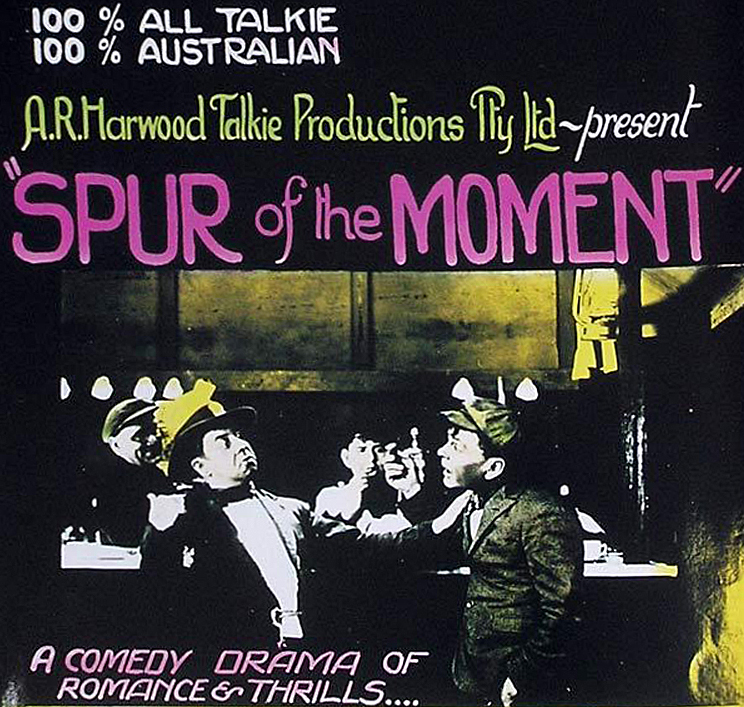
1935 – Jun 15

A public holiday is declared in Beechworth on the day 47-year-old Thomas ‘Tom’ Parkinson begins pushing Tony ‘Sid’ Evans in a wheelbarrow the 78km from the front of Parkinson’s Motors (71-73 Ford Street Beechworth) to the Mount Buffalo Chalet for a wager of £20. The trial of strength and endurance results from a bet made on Anzac Day 1935 – between local garage proprietor Parkinson and Evans, the licensee of the Post Office Hotel – that Parkinson would not be able to push Evans in a wheelbarrow for 78 kms. Given a time limit of 9 days from start to finish, the men take their bet seriously, with both putting in three weeks training before the event – Parkinson pushes a training load of fifteen stone in a makeshift barrow around Beechworth’s sporting ground, while Evans – who weighs in at 13 stone (83 kilos) – plays lots of golf and practices sitting for long periods in a barrow! Much excitement is generated in the lead-up to the race and 2,000 people surround the “barrowmen” in front of the Beechworth Post Office at the start of marathon race at 1.00pm – sponsored by Dunlop Tyres – where the President of the Shire, Councillor Humphries, breaks a bottle of champagne over the barrow which is christened – ‘The Pride of Beechworth’. The event draws major press coverage.


1935 – Jun 22
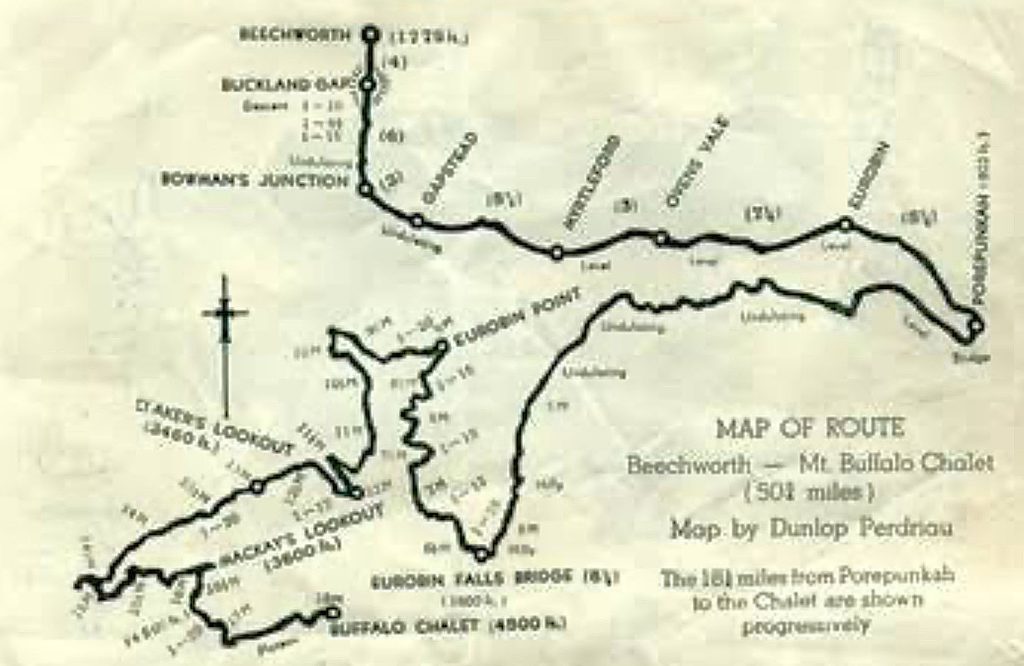
The eighth day of the “Wheelbarrow Challenge” – from Beechworth to Mt Buffalo – is one of the most demanding for the ‘pusher’ Tom Parkinson and his ‘passenger’ Tony ‘Sid’ Evans. As they depart at 10am for the final push up Mt Buffalo, six inches of snow covers the ground, and a snow plough has to brought in to clear a path. Parkinson falls several times and Evans takes a number of spills from the wheelbarrow. The day ends after 5 hours and 9 minutes when the ‘barrowmen” have covered just over three miles and Parkinson has taken 128 breaks!

| The daunting prospect of the challenge – and the subsequent hours of physical strain as Parkinson pushes the barrow and its 13 stone burden through rain, mud, sleet and snow over eight grueling days – captures the imagination of hundreds of thousands of Australians. As each day of the contest passes, public enthusiasm grows, until at the end of the marathon, interest had spread beyond Australia to overseas. Although Parkinson has difficulty keeping to the planned schedule and develops blisters and sore shins, he refuses to call off the bet and insists on continuing. There is plenty of encouragement – crowds line the roads, school children are let out of class to give a cheer as they pass and motorists drive from nearby towns to catch a glimpse of the Beechworth pair. Hospitality abounds as the “barrowmen” are bombarded with more social invitations than they can possibly accept, although they manage to attend a succession of official receptions and dances, and ‘Parky’ dances, in spite of his bandages. When the “barrowmen” reach Mount Buffalo, snow starts to fall heavily and the grade is so steep that stops must be made every twenty yards for Parkinson to rest. A tremendous crowd begin to assemble at the ‘Mt. Buffalo Chalet’ on the final day to see if ‘Parky’ can reach the finishing line in time. |
1935 – Jun 23
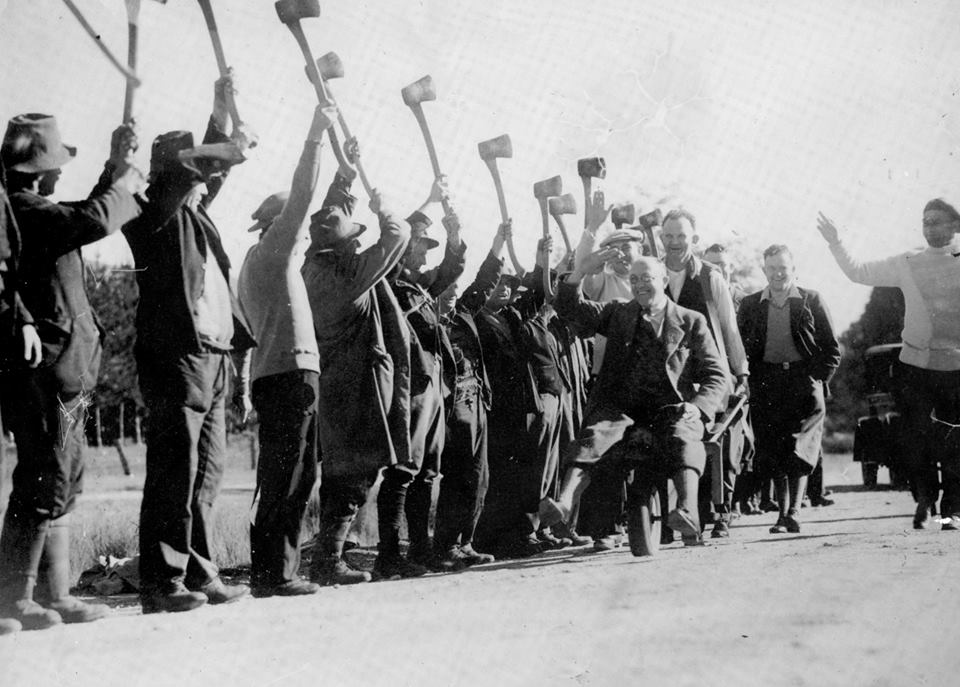
The end of the “Wheelbarrow Marathon”. Cheered on by a cold but enthusiastic crowd, at 12.30pm Tom Parkinson and Tony ‘Sid’ Evans, sitting in the wheelbarrow, finally cross the finish line on top of Mt Buffalo – with 40 minutes to spare! The end of the 9-day marathon and the official welcome is broadcast all over Australia from the balcony of the Mt Buffalo Chalet. The following week Parkinson, Evans and ‘The Pride of Beechworth’ wheelbarrow will make a number of celebrity appearances at the Princess Theatre in Melbourne. Introduced to the audiences every night by George Wallace, who is currently starring in a show at the Princess, they are played on to the strains of the band playing ‘Shuffle off to Buffalo’. The “Wheelbarrow Marathon” has helped put Beechworth ‘back on the map”! On the last Friday night of the engagement, the £20 wager is ceremonially paid. The cheque, signed by Sid Evans (below), is never cashed, and now resides at the Burke Museum.
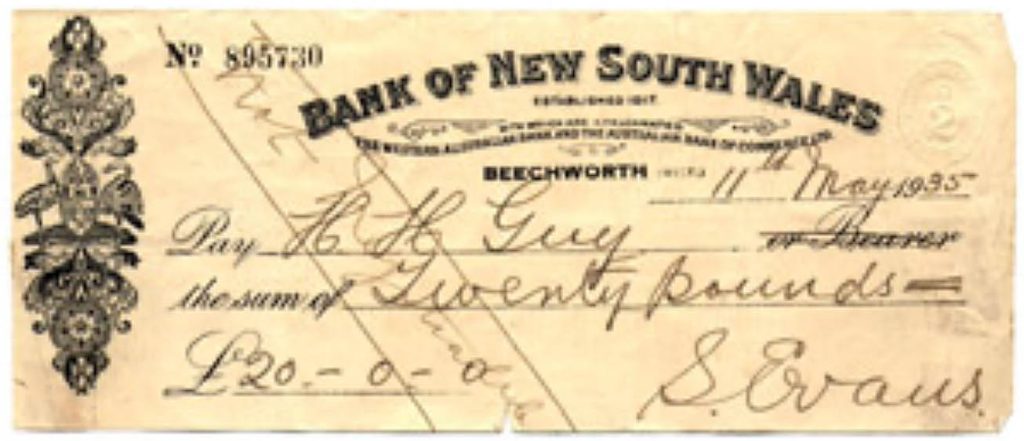
1935 – Jul

Dentist Robert Vandenberg moves into his new Dental Rooms and Residence at 88-90 Ford Street next door to the Lands Office (formerly the Telegraph Station). The building still stands today.

1935 – Sep 1
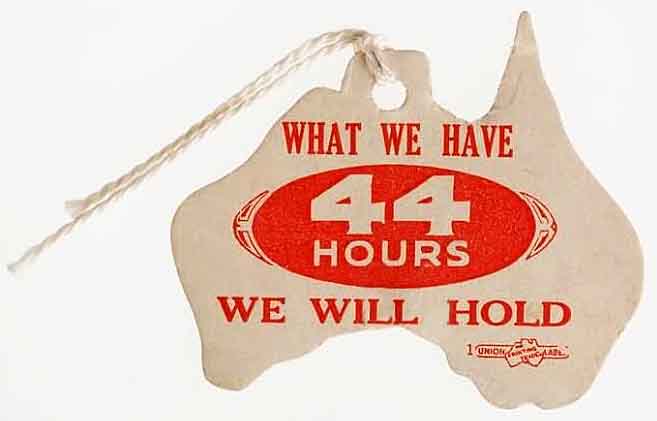
The introduction of the 44-hour working week in Victoria. Even with this drop in employable hours, Zwar Bros Pty Ltd rapidly return to pre-depression levels and by 1938 – under the management of Albert Zwar’s sons Keith, Raymond and Bernard – there are 200 staff employed at the Tannery.
| Despite pressure from many Australian employers to return to the 48-hour week, the unions fight to keep the 44-hour working week as standard (see picture above). In 1947 the working week will be reduced to 40 hours, with the 38-hour working week introduced in 1983. |
1935 – Sep 5
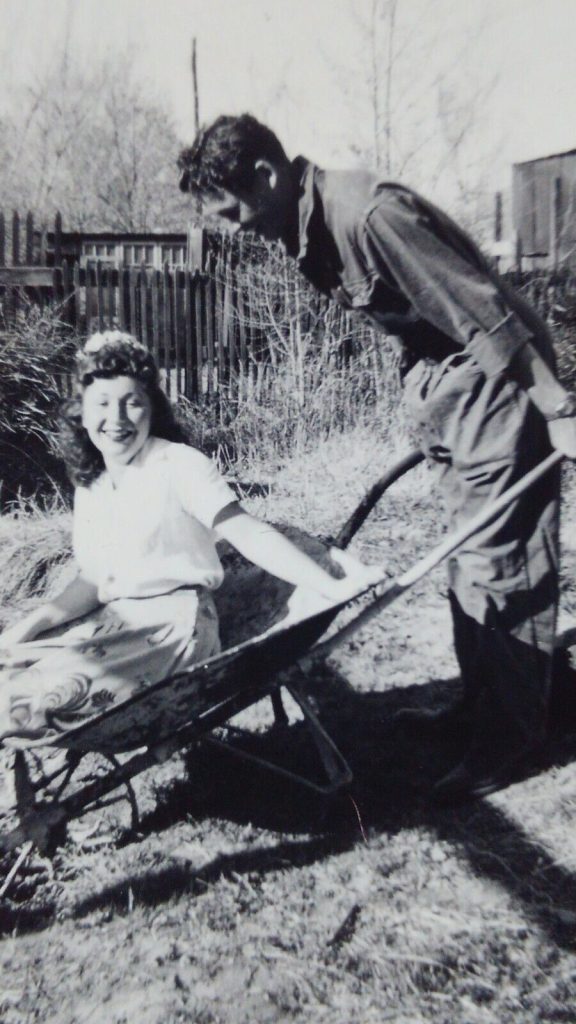
Following the successful and highly publicised Parkinson-Evans “Wheelbarrow Marathon” from Beechworth to Mount Buffalo in June, a husband-and-wife team from Toowoomba in Queensland arrive by train in Beechworth to make an attempt to beat their record. 42-year-old Alfred Williamson and his 40-year-old wife will gather much publicity before they embark on “the test of endurance” a few days later, with Mr Williamson (who weighs only 9 stone, 2 pounds) pushing his wife (who weighs 11 stone, 7 pounds) in their wheelbarrow. They will successfully complete the marathon in just 2 days and 22.5 hours! Flushed with their success, they quickly go on to tackle the Albury to Melbourne wheelbarrow challenge, smashing yet another record – 9 days! Williamson confesses that the days of the wheelbarrow craze are numbered – “People … are fed up with them,” he admitted.
| 28 years later – in the summer of 1963 – Tom Parkinson’s nephew Allen Parkinson and Ronnie Evans (a relative of Sid Evans) will recreate the “Wheelbarrow Marathon” – using the same Parkinson-Evans wheelbarrow – completing the event in eight days, but doing it in reverse – from Mt Buffalo to Beechworth. The ‘Wheelbarrow Challenge’ will return to Beechworth again in 2015, with the first of a number of “Barrowthons”. |
1935 – Nov

William Joseph Pemberton moves his Beechworth grocery business a few doors up Ford Street to the former Star Hotel at 59 Ford Street, purchasing the much larger two-storey building for £500 from the Vandenberg family. Also selling second-hand furniture, drapery items and running a real estate agency from the new location, Pemberton will run the businesses from the former Star Hotel until his death in December 1953 at the age of 69. His wife Bertha Pemberton and their two sons, Maxwell and Robert take over the business and continue to run the Pemberton Store.
| The former ‘Star Hotel’ had long since passed its “glory days” and the knock-down price of £500 that Pemberton pays for the site is in stark contrast to the £5,000 that the land alone – at its prime central address on Ford Street – is said to have been worth in 1856. |
1936 – Apr
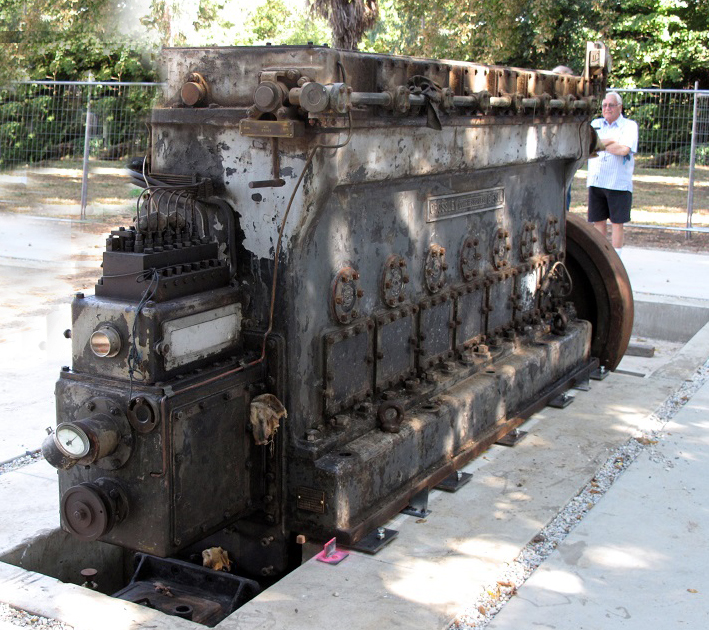
At a cost of £6,000, Zwar’s Tannery import an English-built seven-cylinder Crossley QVD7 (350 horsepower) diesel engine to provide electricity to the tannery, and the street lights of Beechworth, replacing its two 1926 Ruston crude-oil engines.
1936
Public Works Department architect Percy Everett designs a nurses’ home/hostel at the Mayday Hills Hospital. Completed in 1937, the three-storey ‘Nurses’ Quarters’ is constructed in the ‘art deco’ style. Seventy-six years later it will be converted into the Linaker Art Deco Motel.
| Prior to the opening of the Nurses’ Quarters, provision is made for nurses to sleep in their own private room located within each ward. Nurses at the asylum are required to live onsite unless they can show sufficient reason not to. The top floor of the nurses’ quarters is later converted for use as classrooms for nursing training. |
1936 – Nov 21

After 15 years of construction and 2 years of water filling, the Hume Dam near Albury is officially opened by the Governor-General Lord Gowrie. It becomes the largest dam in the Southern Hemisphere and a great feat of Australian engineering. Its completion will create the Hume Reservoir, the main water supply on the Murray River system. The official opening is on almost the same day – and near the same spot – that Hume and Hovell had crossed the Murray River (which they named as Hume’s River) 112 years earlier.

| The ‘Federation Drought’ – from 1895 to 1903, including the record dry year of 1902 – is one of the worst in Australia’s history. The drought reinforces the need for water storage to capture the high flows in the winter and spring months for distribution during the warmer, drier months. A further drought in 1914 is the final catalyst for the construction of the Hume Dam, with work commencing in 1919. The final cost of the project is £5,550,000 (about $64 million in today’s decimal currency). |
1936 – Dec

Reverend John McCarthy, the Bishop of the Catholic Diocese of Sandhurst, arrives in Beechworth to celebrate the golden jubilee (50 years) of the Brigidine Convent.
1937

With the completion on the Nurses’ Quarters at the Beechworth Hospital for the Insane, construction commences on a new female patients ward.
1937

Cycling around the Beechworth area continues to grow in popularity.
1937 – Aug 6

Following a serious illness, Percival ‘Percy’ John Charles Pund dies at the age of 74 in Beechworth. Born at Three Mile, Percy was the only son of the late German-born John Martin Diedrich Pund and Emily Ada Pund. Educated at the Beechworth Grammar School, and afterwards at Melbourne Grammar School, he would go on to be the licensee of both the Corner Hotel and the Hibernian Hotel in Beechworth, and for a time managing the Resch’s Lion Brewery and cordial factory at Cootamundra in NSW before returning to Beechworth to act as his father’s chief assistant at his father’s mining industries at the Three Mile. Percy’s widow Annie will live until the age of 90, passing away in 1954.
1937 – Sep

The Beechworth Football Club wins the Premiership, defeating Myrtleford by 36 points. It is the Bombers first Grand Final win since 1914. It also kicks the highest score in a single match during the year with 26 goals, 15 behinds (171) against King Valley who only score 7 behinds!

| In 1937 Beechworth forms a ‘seconds’ football team – the ‘Beechworth Stars’ – who play in the Myrtleford-Bright League. |
1937 – Nov 3

Beechworth citizens gather – dressed in an array of clever costumes – for a night of fun and frivolity at the Town Hall for the Back to Childhood Ball. Joining them in the front row in the photograph above is the Balls’ mascot – a small goat!
1938

34-year-old Roy Collington Harvey takes over the Beechworth Newsagency at 26 Camp Street from previous owner James Sloan. Harvey and his wife May will run the business next door to the Beechworth Post Office for the next 28 years, beating James Ingram’s record of 27 years (1855-1882).
1938

After establishing Drapery and Manchester shops in Leeton, Cobram, Bright, Wangaratta and Myrtleford (above), 44-year-old Michael ‘Micky’ Isaac Freeman now moves to Beechworth and establishes a Freeman’s Bargain Draper store at 48 Ford Street, living above the premises. His sister Helen works alongside him at the Beechworth store.
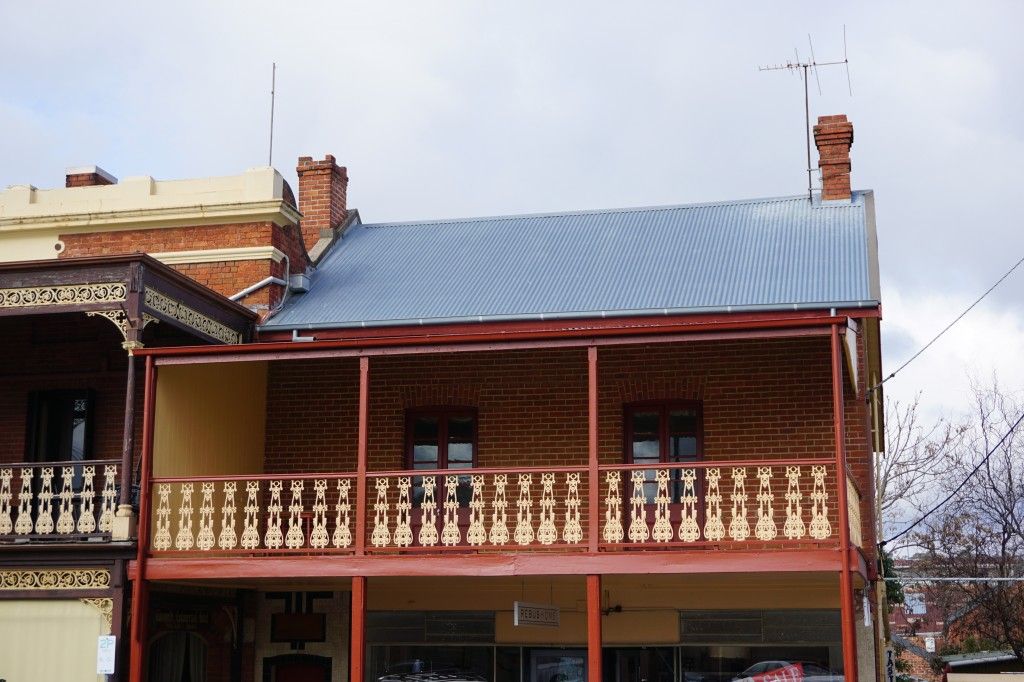
| Born Michael Friejman in Lodz, Poland in 1894, he had arrived in Australia in 1928 with just 1/6d (15c) in his pocket. Speaking a number of languages, Freeman starts his selling career with a single suitcase full of socks and handkerchiefs, and ‘door knocks’ his way around country towns selling his wares. His natural ability to spot and sell a bargain leads him to a life of business in drapery, furniture and manchester. |
1938

15-year-old Desmond ‘Bill’ Thomas has left the Beechworth Higher Elementary School and just started working at the Zwar Brother’s Beechworth Tannery alongside his father (who has been employed by the Zwars for some time) when his hand gets caught in a piece of machinery and poor young Bill loses his entire right arm. He will later receive £600 compensation from the Zwars for the industrial accident.
| He and his family move to Melbourne shortly afterwards and, despite now only having one arm, Bill applies to join the Australian Army in 1941, hoping to be sent to overseas to be a ‘runner’ between the lines in the war. He is accepted but, because of his work injury, he is instead put to work in the office at the Victoria Barracks throughout the remainder of the war. |
1938 – Sep

The Beechworth Football Club are again victorious in the Grand Final – making it back-to-back Premierships – when they beat Myrtleford (again), this time by 21 points. Throughout the entire 1938 season, the Beechworth Bombers are only beaten in one match!
1939 – Jan 13
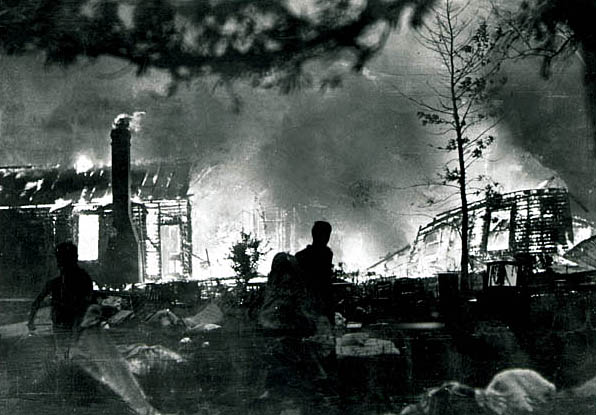
Black Friday. Much of Victoria is covered with bushfires and 70 lives are lost. This fire, along with a devastating fire near Wangaratta at Christmas 1943 will result in the state government passing an act to form the Country Fire Authority in 1944, which is officially launched in 1946.
1939 – Jul 7

Beechworth’s Infant Welfare Centre is officially opened, as Sister McKnight of Wodonga is employed as ‘Sister-in-Charge’ to supervise two rooms within the Beechworth Council Chambers on Ford Street, specifically for Beechworth’s new mothers and their babies. Beechworth Councillor and Engineer Leslie Herbert Sambell has arranged for the refitting of both of his Engineering Rooms – removing unnecessary cupboards and counters – with the walls now re-painted in more suitable colours, and Sister McKnight will also have the use of the kitchen, where water and gas are laid on. As his Engineering Rooms will only be required one day a fortnight, Sambell will not vacate them, but will make sure they are rearranged and left ready for Beechworth mothers and infants exclusively every other Thursday, when the main room will be used for interviews and consulting by Sister McKnight.
1939

The majority of the Hume Highway between Melbourne and Sydney has now been sealed with a bitumen surface. The Hume Highway stretches for 547 miles (880 km).
| By 1955 numerous ‘Route 31’ signs have been erected over the full length of the Hume Highway as part of a national numbering scheme for Australia’s major roads. |
1939
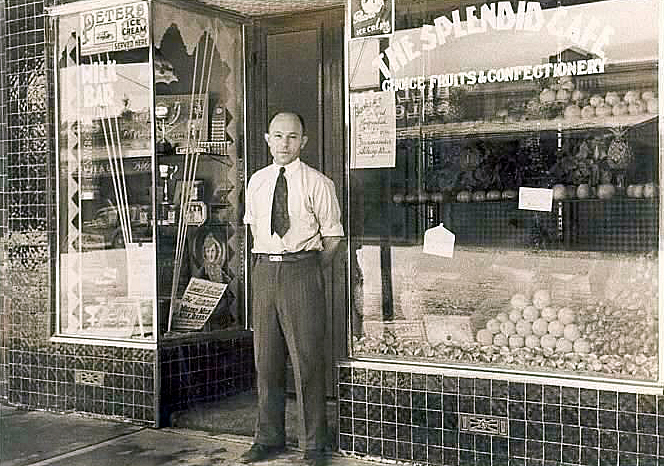
Greek-born Paul Voglis is running The Splendid Café, a beautifully stocked, well maintained and popular Milk Bar business at 68 Ford Street. He has been running the business since the beginning of the 1930s and will continue well into the 1940s.
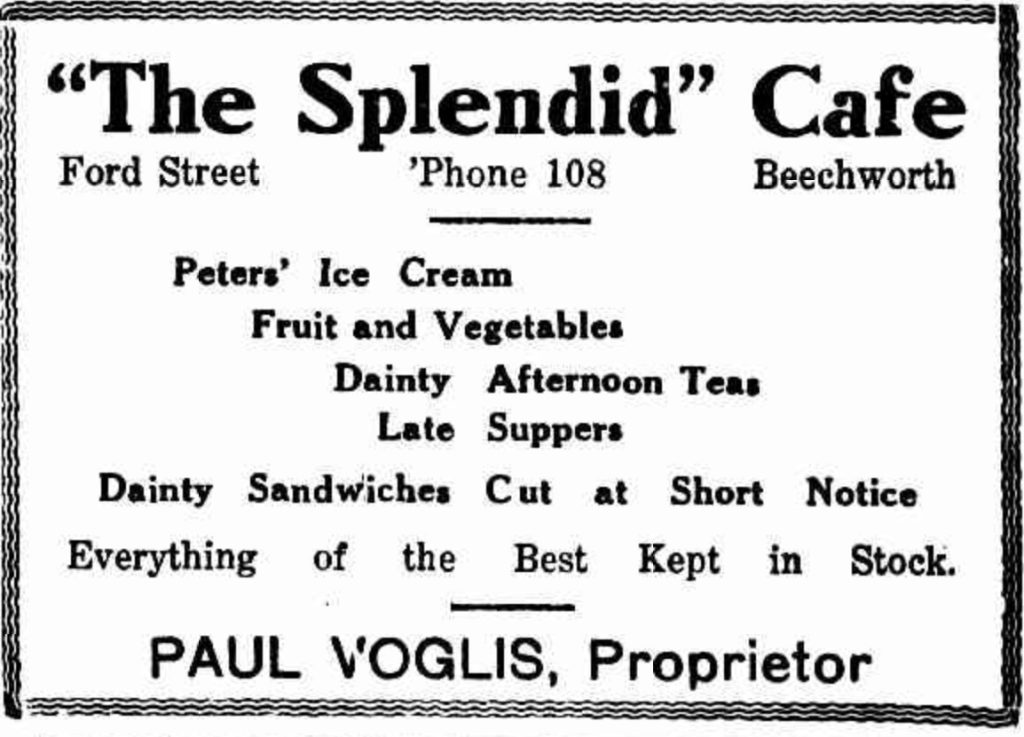
1939 – Sep

The Bombers make it three-in-a-row, when the Beechworth Football Club wins the Premiership, defeating the Waratahs by over 7 goals. Once again, the Bombers are only defeated in one match throughout the entire season!
| In an interesting coincidence, the Beechworth Football Club won three premierships in a row – 1912, 1913 and 1914 – just before the outbreak of the First World War. Now they repeat the triple feat again – 1937, 1938 and 1939 – just before the outbreak of the Second World War. |
1939 – Nov 20

Beechworth’s increasing isolation from Victoria’s expanding transport network prompts the Beechworth Progress Association to sponsor Tom Parkinson from Parkinson’s Garage to provide a regular bus service between Beechworth and Wangaratta. Parkinson’s Bus Service begins departing Beechworth every day at 3.50pm, arriving in Wangaratta in time to catch the 5pm train for Melbourne. The bus will then wait, to meet the 8.35pm train from Melbourne and transport passengers – and the day’s mail – back to Beechworth. Morning bus trips to meet the train at Wangaratta will soon added (see above Timetable). The cost of a trip, per passengers, is 6 shillings for one way or 8 shillings for a return ticket. (This is not Tom Parkinson’s first transport service to Wangaratta, as he had started running his ‘Wangaratta to Beechworth Motor Car Service’ in 1930 – below.)

1940

30-year-old John Gilmer Downes Jnr establishes Downes’ Pharmacy at 82 Ford Street, where the PharmaSave Beechworth Pharmacy stands today.
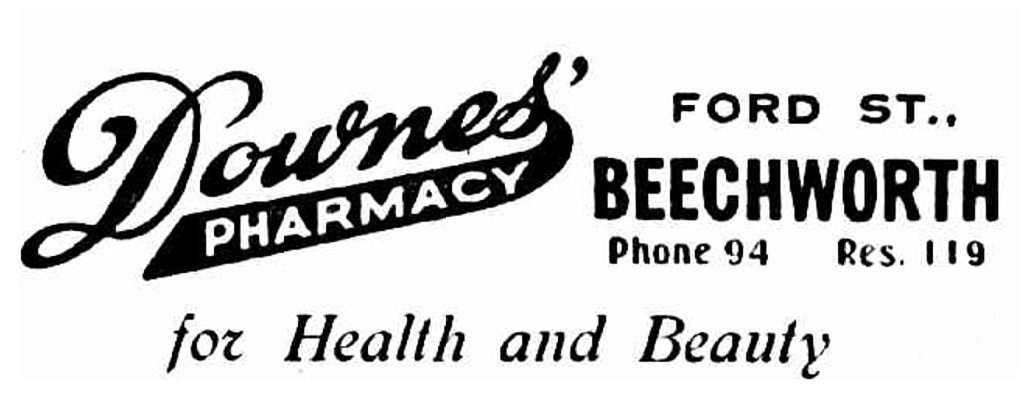

1940
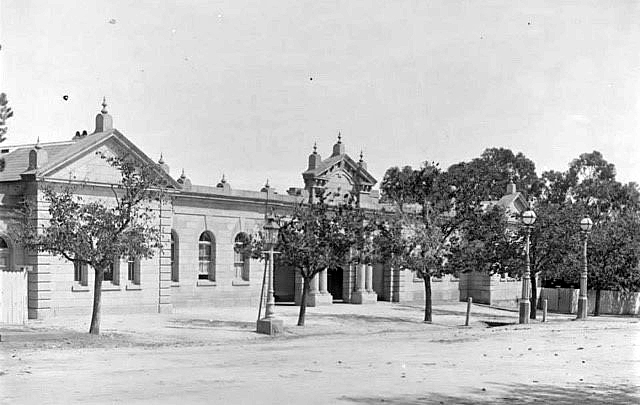
Having first opened in February 1857, the importance of Beechworth’s Ovens Goldfields Hospital in Church Street is diminished with the construction of new and more modern hospitals in nearby towns like Wangaratta and Albury. It is now officially closed, to be replaced by a smaller but more modern Ovens District Hospital on Sydney Road.
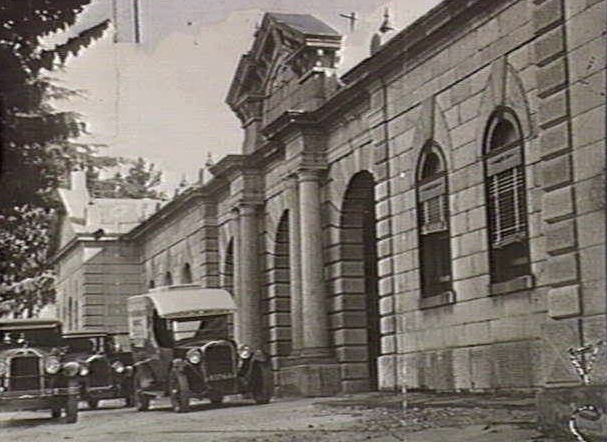
| By 1910, the Wangaratta Hospital is receiving more patients than the hospital in Beechworth and by 1940 has replaced Beechworth as the district’s base hospital. |
1941

The Hospital & Charities Commission call for tenders for the removal of the now-closed Ovens Goldfields Hospital buildings in Church Street. John James Alfred Arthur Clements is successful in the bid, but the Commission enforces the condition that removal must be completed within 18 months. This proves difficult for Clements who does not have the full resources and manpower (as most men are away at the war) so, after removing most of the buildings, he must leave the large stone façade in place which is why the hospital façade still stands proudly today.
| The former hospital gardens will later be renamed ‘Centennial Park‘ and the 1st Beechworth Scout Hall will be built in the grounds in 1962. In 1964 restoration work will be undertaken on the historic hospital façade. |
1942 – May 23
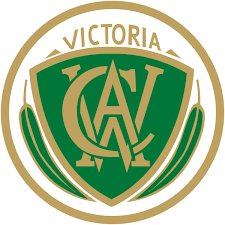
The Beechworth Branch of the Country Women’s Association is established, with the first official meeting held on June 5.
| The ‘Country Women’s Association of Victoria’ is founded in March 1928 as a philanthropic organisation of women supporting women, children and families across Victoria. Today, Victoria’s ‘CWA’ has approximately 5,000 members. |
1942

After being briefly discontinued between 1931 and 1933, ‘County Court’, ‘Court of Mines’ and ‘Court of General Sessions’ cases at the Beechworth Courthouse are now permanently discontinued, with ‘County Court’ hearings moved to bigger township of Wangaratta. All of Beechworth’s ‘County Court’ records are also directed to be moved to Wangaratta.
| In 1917 the ‘Wangaratta Court of Petty Sessions’ had assumed responsibility for hearing all Beechworth district liquor licensing proceedings, and sittings of the Supreme Court had been moved from Beechworth to Wangaratta in 1918. |
1942

After nearly 65 years in business, the Black Springs Bakery closes. Three miles from Beechworth, on the road to Wangaratta, the Black Springs Bakery had been established by William James Price in 1875. After his death in September 1913, his widow Elizabeth Price, along with her son-in-law, George Croom (who has been connected with the bakery for 40 years, having learned the trade from William Price) continue running the business, supplying bread to Beechworth and surrounds. However, after George Croom’s death in September 1942, Elizabeth Price decides to close the bakery, selling the business and goodwill to Mr. P. A. Taylor. Elizabeth passes away a year later, on 2 July 1943, aged in her late 80s. The family cottage – “Buffalo View” – will be dismantled and rebuilt in Beechworth some time later.

1943 – Feb 6
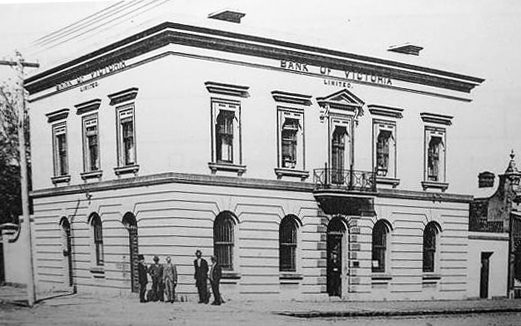
Beechworth’s Bank of Victoria – part of the Commercial Banking Company of Sydney (CBC) since 1927 – closes its doors, with the CBC moving its banking operations to Wangaratta, citing a lack of manpower due to the war.
| In 1982 ‘CBC’ will merge with the ‘National Bank of Australasia’ to form the ‘National Australia Bank’ (NAB). |
1943 – Dec 22

At 4.30pm on an extremely hot and windy afternoon, a fire breaks out beside Bowser Railway Station (formerly Beechworth Junction Station) caused either by tree branches coming into contact with power lines, sparks from a train, or from embers from a gravel truck powered by a charcoal burner. The fire soon gains momentum, heading for the Wangaratta-Eldorado Road. Amongst those who rush to the site as the fire spreads is a fire truck from the Wangaratta Rural Fire Brigade, but as the driver tries to turn the truck around amid the smoke and ash that has engulfed them, he fails to see a roadside drain and the truck’s front wheels become embedded in the drain, leaving the truck unable to move. Confused and disorientated, the men panic, some trying to shelter behind trees, while others run towards the Ovens River. Unfortunately, a few are caught in fences and a number are badly burnt. Ten lives are lost, some at the scene, others dying from their severe burns later in hospital. A monument in their memory stands near Tarrawingee on the way to Beechworth (below). As a result of the fire and loss of life, the state government passes an act to form the Country Fire Authority (CFA) in 1944, which is officially launched in 1946.

1944

Arthur A. Niemann is running his popular Hardware and Furniture store at 24 Camp Street. Niemann also stocks sports equipment including a “range of tennis paraphernalia”.
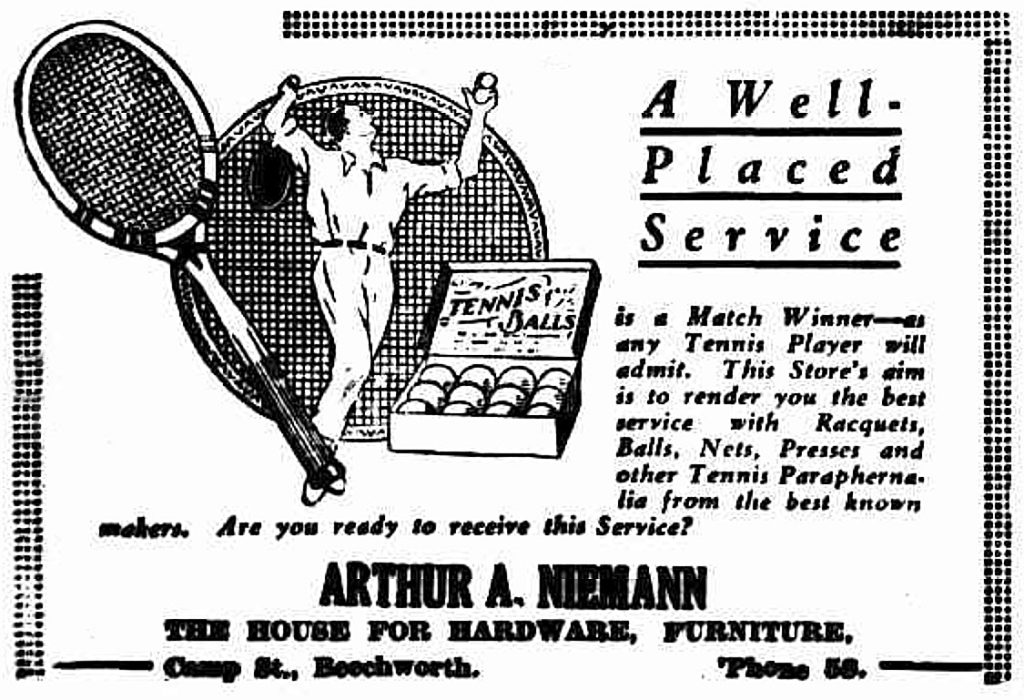
1944

Two large, round satellite dishes are installed next to the tower at Mt. Stanley, 11km from Beechworth. The experimental micro-wave radio station is established on the site by the Army Signal Detachment Unit as part of an highly classified Ultra High Frequency (UHF) link between Melbourne and Sydney during World War Two. It intends to determine the hitherto unexplored concept of the transmission of micro-waves; that is, radio signals which can only be transmitted by line of sight, requiring “hill-top to hill-top” locations.
1945
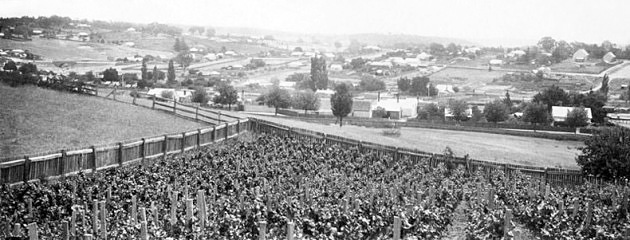
Vin Capriotti establishes the first new vineyard in the Beechworth area in decades, planting 5 acres of mixed grape varieties at Everton Hills, sourced from Chateau Tahbilk.
| Capriotti’s vineyard is purchased by ‘Brown Brothers’ of Milawa in 1950, who increase plantings to 40 acres. The last vintage produced by ‘Brown Brothers’ at this vineyard is in 1978 after which it is sold due to low yields and the vines fall into neglect and virtually none remain. |
1945 – Nov
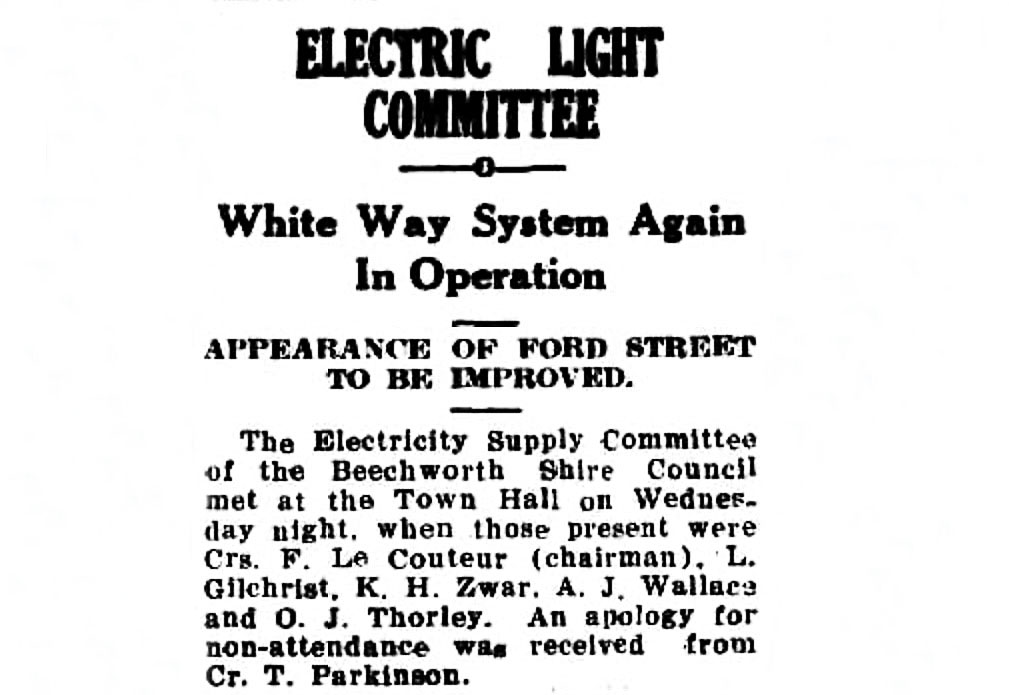
45 shops and businesses in Beechworth are connected to the electricity network – known as the ‘White Way System’ – now being provided to Beechworth by the State Electricity Commission of Victoria (established in 1921).
1945 – Jul 20
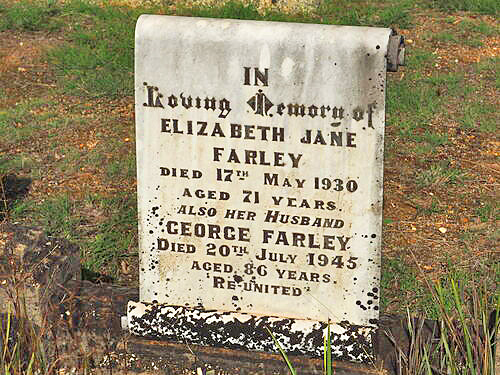
George Henry Farley passes away at the age of 86. Born in Collingwood in Melbourne in 1857, he arrived in Beechworth with his parents as a 6-year-old. Learning the carpentry trade from his father, George Farley Snr, he will become a respected Beechworth builder and undertaker, after taking over the undertaking business from James Kyle at 39 Ford Street. George Henry Farley is very involved in the Beechworth community and is bandmaster of the ‘Beechworth Town Band’ for 16 years and a member of the ‘Ancient Order of Foresters’ for an impressive 68 years! In 1878 he married Elizabeth Jane Crouch, and they have 9 children, 28 grand-children and 15 great-grand-children! George will outlive his wife by 15 years.
1945
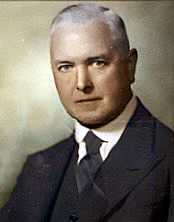
Following the death of millionaire chain store operator Oliver Gilpin in 1942, Frank Jarvis, who has run his popular general store at 73 Ford Street since 1905, purchases the adjoining ‘O. Gilpin’ branch store which had, for many years, been owned and operated by Gilpin as one of his numerous Australia-wide clothing and haberdashery chain stores. Frank’s new acquisition becomes the grocery store while his old shop now houses his large range of hardware products, which had previously been located in a small area of the original shop. The very large storeroom behind the old grocery shop remains the storeroom for foodstuff and fodder. Frank’s son Max had been managing the business for some years before World War II (when he was a member of the R.A.A.F) and on his return continues to do so until 1956 when Frank sells the grocery business to Max and his wife Jean.
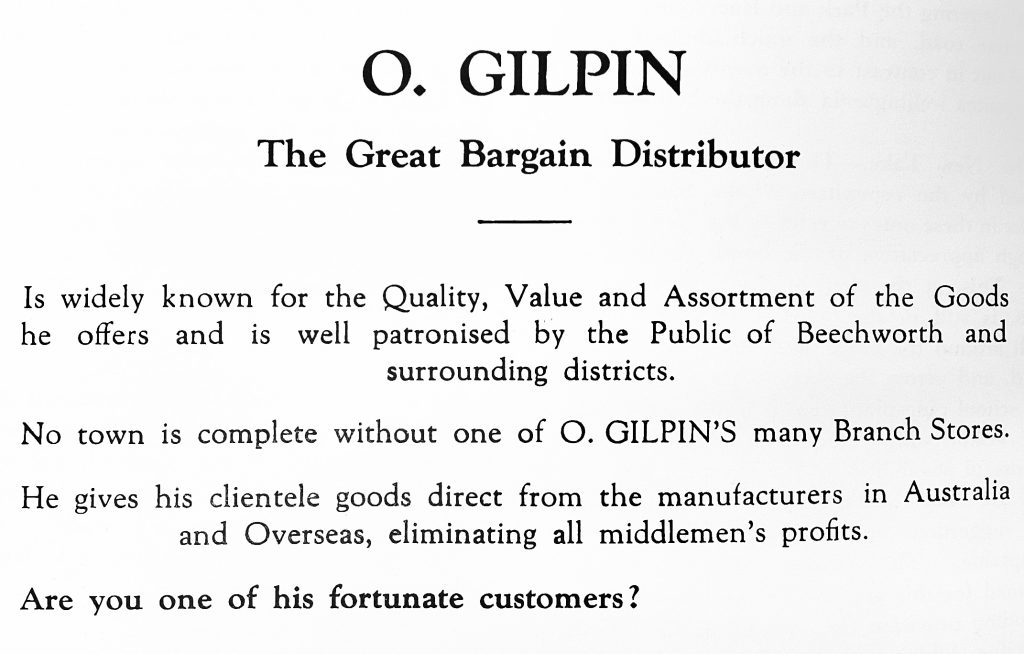
| The ‘Jarvis Grocery Store’ is not Frank’s only business venture; he also owns the adjoining shop on the Camp Street side, which he purchased soon after the first World War. This is known as ‘The Bike Shop’ where he sells new bicycles and baby’s perambulators, as well as rebuilding and repairing others. Always artistic, Frank regularly adorns bicycles and prams with finely painted designs. He hires bicycles to the local lads for three pence per half-hour or sixpence per hour. For many years, at the rear of ‘The Bike Shop’ stands a penny-farthing bicycle which, in his younger years Frank, rides in town processions. When he sells the grocery shop to his son Max in 1956, he retains ‘The Bike Shop’, which he continues to operate until his death in 1964. |
1946
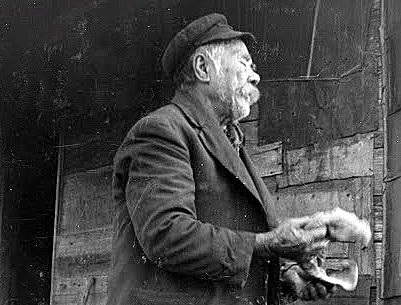
Well known local identity Wong Hor – ‘Blind Tommy’ – passes away at the age of 89. Wong Hur is one of the last Chinese miners to arrive in Beechworth in search of gold in the 1860s and remains in Beechworth after the closure of the Chinese township. He lives on the outskirts of Beechworth on Dingle Road at Silver Creek in a house built for him by the Shannan family. (They will build two huts for him … a second after the first hut burns down.) He gains the affectionate nickname ‘Blind Tommy’ after he loses his sight in the 1890s. By the mid-1920s Beechworth’s originally huge Chinese population has dwindled to just 6 men, including ‘Henry’ Ah Yett. Over the years ‘Blind Tommy’ supplements his diet by growing vegetables, selling the surplus to locals for a few shillings, making his way into town with the use of a ‘blindman’s stick’. In December 1940 he is admitted to the Ovens Benevolent Asylum as he has become unable to properly look after himself. He will remain there until his death six years later. He becomes the last Chinese person to be buried in the Chinese section of the Beechworth Cemetery, after ‘Henry’ Ah Yett in July 1932.
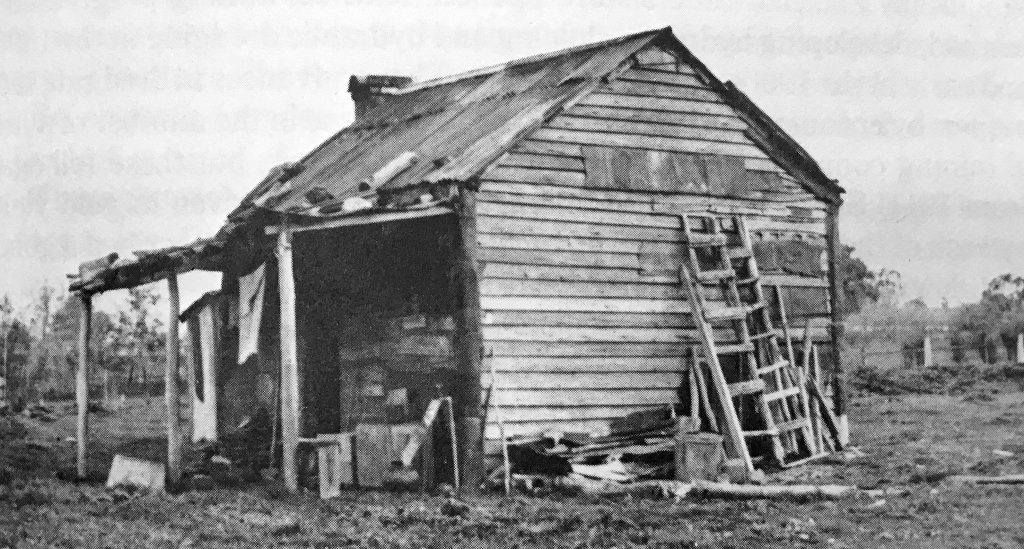

1947
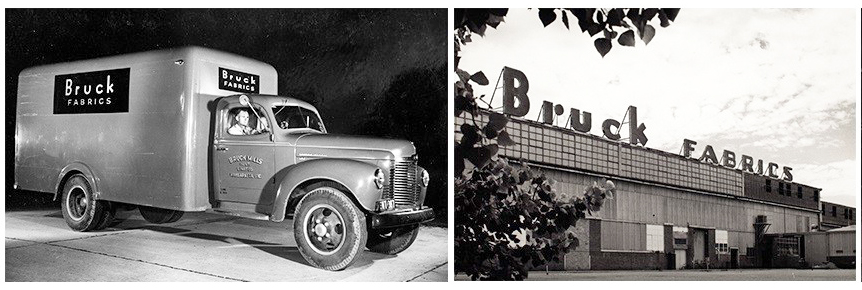
Canadian company Bruck Textiles – founded by Isaac Ignace Bruck in 1921 – establishes Bruck Mills Australia Limited and takes over the disused aluminium factory established in Wangaratta in 1942 (as part of the war-time industry) and opens the Bruck Fabrics Mill in the large buildings. This will accelerate Wangaratta’s population growth, outpacing Beechworth substantially. At one time the Bruck Fabrics Wangaratta mill will employ more than 1,000 people.
1947 – Jul 1
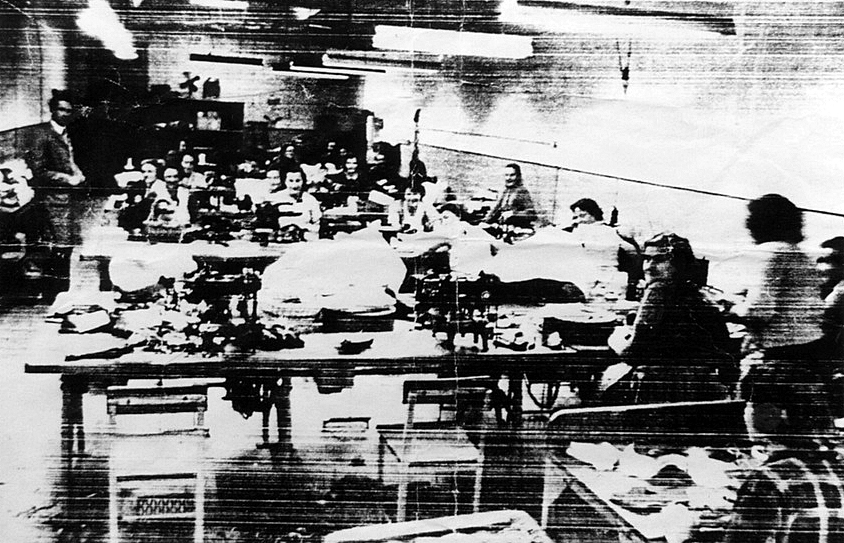
Footrest Shoes and Pitman’s Shoes both open factories in Beechworth, a boost for post-war employment in town. Mr. T. Nagle Pitman, managing director of parent company Elgin Shoes in Melbourne, selects Beechworth as a suitable location for his new factory due to the availability of labour in the town, particularly girls under sixteen years of age. At its peak, the shoe factory employs 36 women and girls, which include post-war migrants. The factory on Ford Street will close in August 1961 as increased centralisation of both populations and industry in nearby Wangaratta and Wodonga lead to the closure of many factories in small towns in the 1960s and 1970s.

| After the Second World War, Australia admits increasing numbers of immigrants in order to fulfill labour requirements for the rapidly increasing demand of consumer goods. These migrants are largely from European Countries in line with the ‘White Australia Policy’. By 1954 Beechworth will have 170 migrants from the UK, 102 from Hungary, and 63 from Germany. |
1947

A two-foot gauge tramway line is built at the Mayday Hills Lunatic Asylum to carry wood down the hill from the wood-stacking yard, across a water race, through a gate in the surrounding brick ha-ha wall, and along an internal road, then past the store to the engineer’s workshop, where the asylum’s main boilers are located. A little railway siding is then completed to the firewood stack beside the laundry boiler house, and another is built to run to the male accommodation wing at the other end of the main building. Three open-air railway trucks run on the line, pushed by an asylum attendant, with two patients selected to assist him. The little railway trucks have no brakes and coast freely along the tracks. This little tramway will transport wood (and sometimes other heavy materials) around the vast asylum for almost 20 years until a decision is made in the early 1960s to replace the wood-burning boilers with oil-fired units, negating the need for large and regular amounts of firewood, and some of the railway tracks are removed.
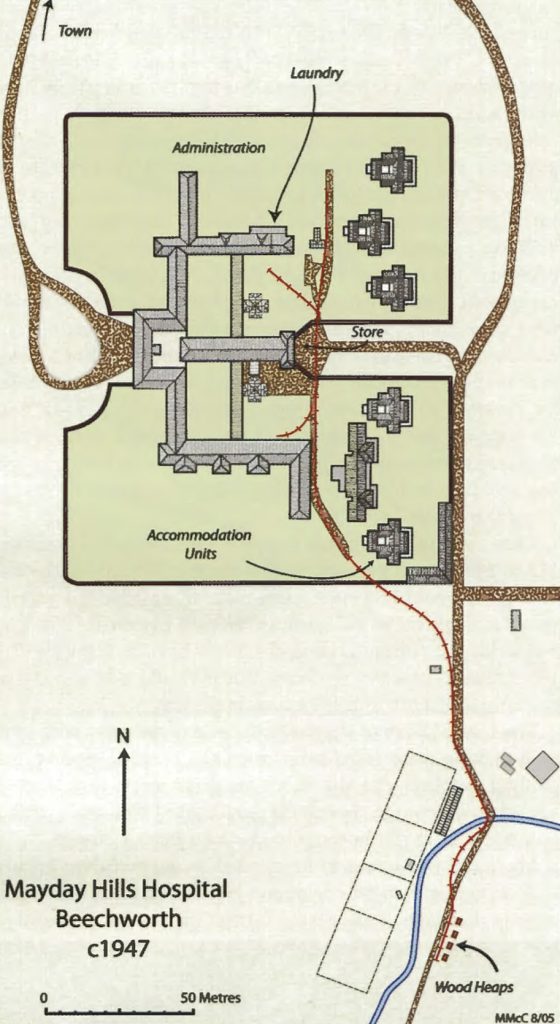
| Don Hayes, who works at the asylum, along with Rex Norman, appeal to the Minster of Health to let them carefully remove the remaining rails. He agrees, provided they restore the roadway to its original condition, which they do. Don and Rex have a vision of restoring the little railway line and constructing it as a tourist attraction around the ‘Beechworth Caravan Park’ at Lake Sambell … which they will do … and ‘The Golden Pioneer Railway’ will be ready to roll in 1967! (below). |

1948

Arthur A. Niemann – who has been running his popular Hardware, Drapery and Furniture store on Camp Street for many years – moves the entire business to 52-58 Ford Street after purchasing the much larger Clements Store premises from the estate of John James Alfred Arthur Clements, who had passed away in 1942.

1948
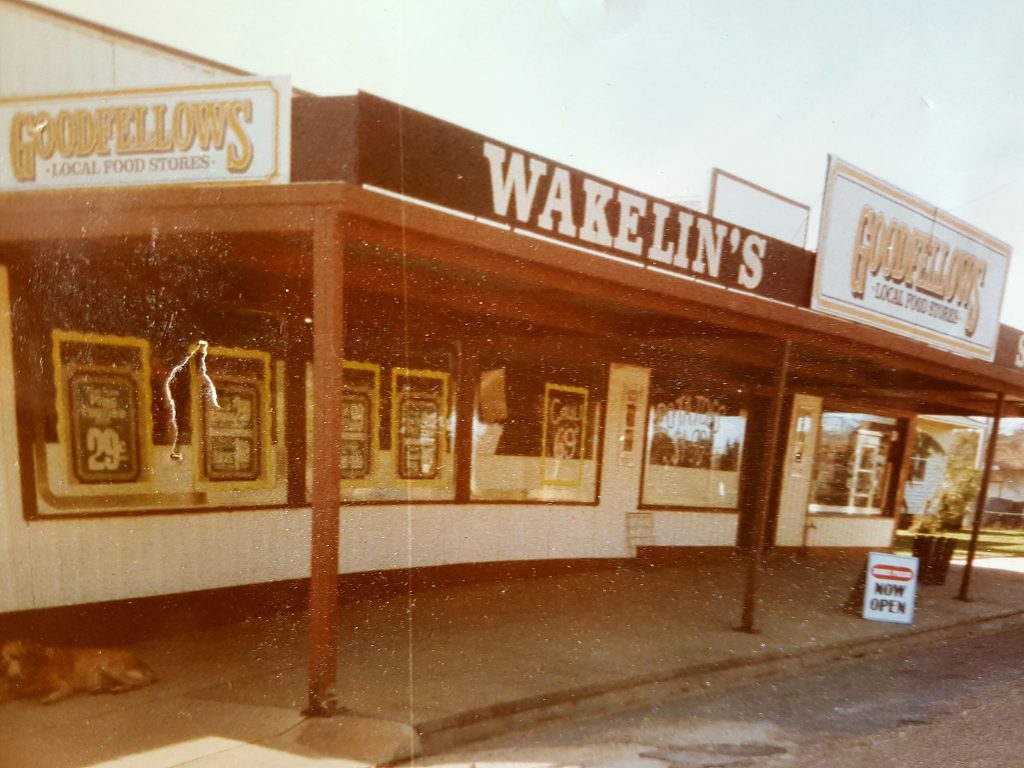
Danny and Betty Dingwall open a general store (later a supermarket) at 22 Junction Road, opposite the Beechworth Higher Elementary School. It becomes known locally as the ‘Dingle Shop’.
1948 – Nov 29

Australian Prime Minister Ben Chifley is on hand to see the first Holden cars roll off the production line at the General Motors-Holden factory at Fisherman’s Bend in Melbourne. The Holden 48-215 (better known as the Holden FX) is a 6 cylinder, four-door sedan that sells for around $733 (roughly $24,000 today). Interest is huge, and by the time of its 1948 launch, 18,000 Australians have already paid a deposit for the Holden FX! The Holden motor car proves instantly popular, with over 120,00 of the vehicles manufactured between 1948 and 1953. A bonus for Beechworth is that from the very first Holden car, Zwar Bros Pty Ltd is one of only three tanneries supplying General Motors-Holden with leather trim for the FX (and then the FJ model). By the 1950s, one in ten Australians own a car, and car travel will have a noticeable impact on Beechworth, as more and more people take driving trips to the historic town.
| Chifley had issued a challenge in 1944 to the emerging Australian automotive industry to produce a motor car that would be entirely manufactured in Australia. The Holden FX is the result. |

1949 – Aug 27
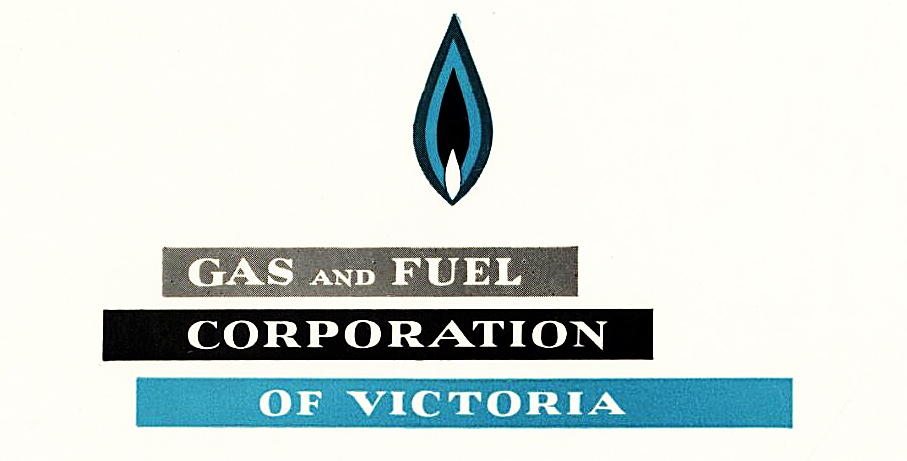
After providing local gas supplies to Beechworth for 70 years, the Beechworth Gas Works on the corner of Albert Road and Harper Avenue closes for business. Gas will now be provided by the Gas and Fuel Corporation of Victoria, a newly created government-owned monopoly supplier of household gas.
1949 – Sep 6

33km from Beechworth, the Orana Cinema opens at 21 Reid Street, Wangaratta, featuring 1,308 seats. The word ‘Orana’ means ‘Welcome” in a number of Aboriginal languages). Village Cinemas build the Wangaratta Drive-In Cinema in 1958. The Orana Cinema closes in October 1980 and is converted into the Skatescene skating rink, followed by an indoor cricket pavilion from 1984. In 2010 the art-deco cinema is converted into an arcade with offices and renamed Strand Arcade.
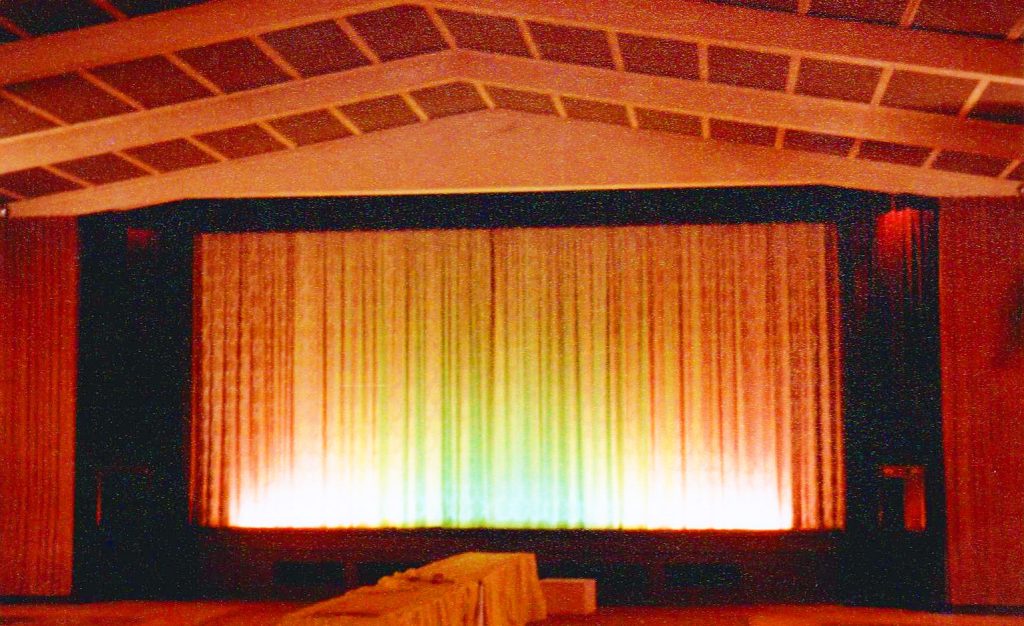
1949
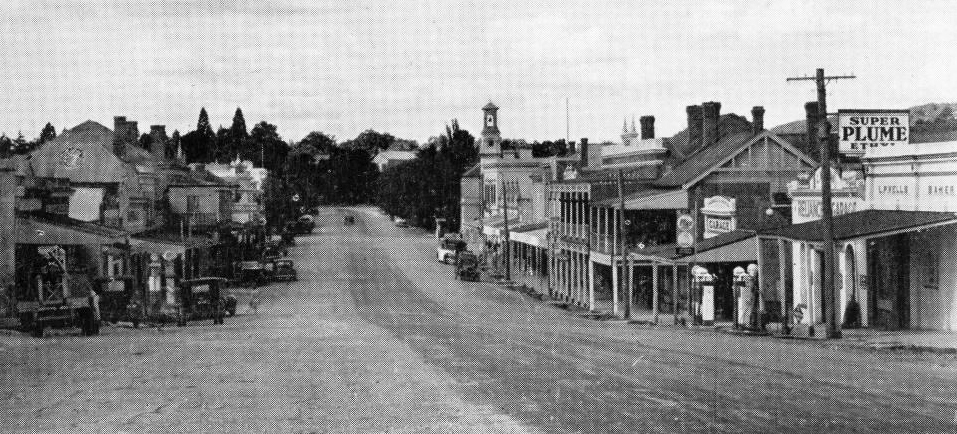
With the release of the first Australian-built motor car – the Holden FX – a year earlier, the number of motor cars in Beechworth increases – both with new cars owned by locals and visitors arriving to tour the town in the new motor cars. Beechworth is now home to a growing number of car dealerships, mechanics, and petrol stations including Parkinson’s Garage – selling ‘Shell’ petrol, the Reynold’s Beechworth Garage and the Reliance Garage – selling ‘Plume’ petrol – next door to Well’s Bakery on Ford Street.
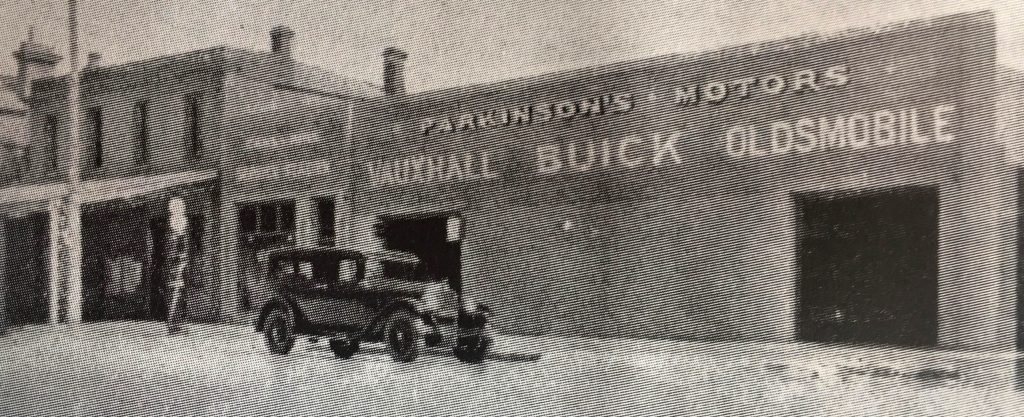

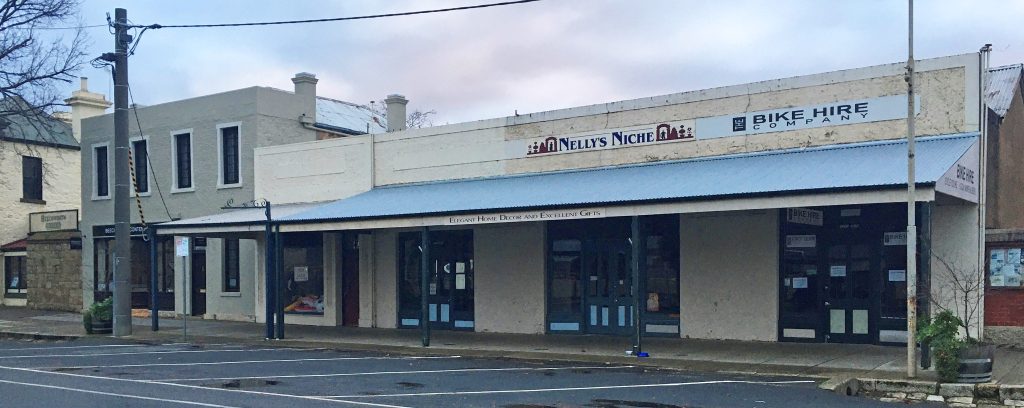
| In the early part of the 20th century, before ‘Parkinson’s Garage’ is built, the vacant land is often used for outdoor film screenings. Thomas ‘Tom’ Parkinson will pass way in 1955 aged 67. |
1950 – Jan
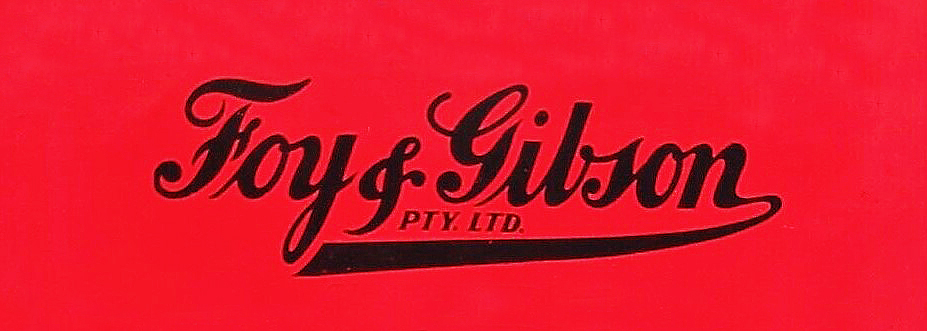
Arthur A. Niemann’s popular drapery store at 52-58 Ford Street is bought out by Foy & Gibson of Melbourne who have been expanding their ownership of department stores all over Victoria. Foy & Gibson will own the large Beechworth store for just two years before it decides to ‘downsize’ and sell their Beechworth branch to Michael Freeman in 1952.
1950

At a cost of £25,000, a new steam generating plant is built at Zwar Bros Pty Ltd with a 100ft brick chimney stack, consisting of 33,000 bricks from Chiltern and fueled by over 2,000 cords of wood annually. (A ‘cord’ is 128 cubic feet of wood.) This chimney stack still stands proud and tall today, on Boyd Lane, off Old Tannery Road, although most of the other buildings have gone.

| From 1948 Zwar Bros Pty Ltd is one of only three tanneries supplying General Motors Holden with leather trim for their famous FX and then FJ model motor vehicles. |
1950
Patients at the Beechworth Mental Hospital increase to 785 (from about 300 in 1870).
1950 – Sep

Playing in the Ovens & King Football League, the Beechworth Football Club win the Premiership, defeating Whorouly by 29 points. It is their first Grand Final victory since 1939. The Beechworth Bombers will win the flag again the following year … then defeated in the 1955 Grand Final by just two points … before claiming victory again in 1956.
1951

Beechworth Gaol is converted into a training prison – with the addition of a full-time Education Officer in
1951 – Aug 17
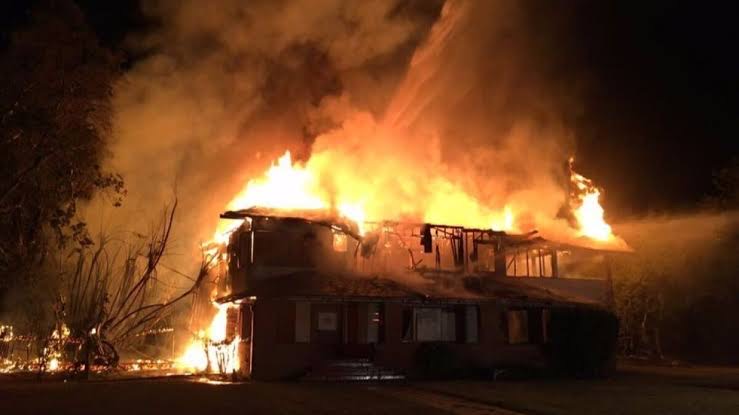
A fire breaks out in the male wing of the Beechworth Hospital for the Insane and sweeps through the wing in the space of just 15 minutes. Fortunately, all the doors of the 100 rooms and dormitories are locked by identical keys and the five male attendants are able to rush along the corridors and and unlock all the doors with their 5 matching keys to release all of the male patients within 10 minutes. Around 370 male patients, many naked, are evacuated just minutes before the fire causes the blazing top story of the male wing to collapse. However, in the confusion surrounding rescue operations by the attendants and the quickly-on-the-scene firemen, eleven of the inmates escape – terrified – into the surrounding hilly country. Seven are later recaptured, but four – described as “not dangerous” – remain at large. No lives are lost, but the blaze completely guts the accommodation of the male patient’s wing, with damage estimated at around at £500,000.
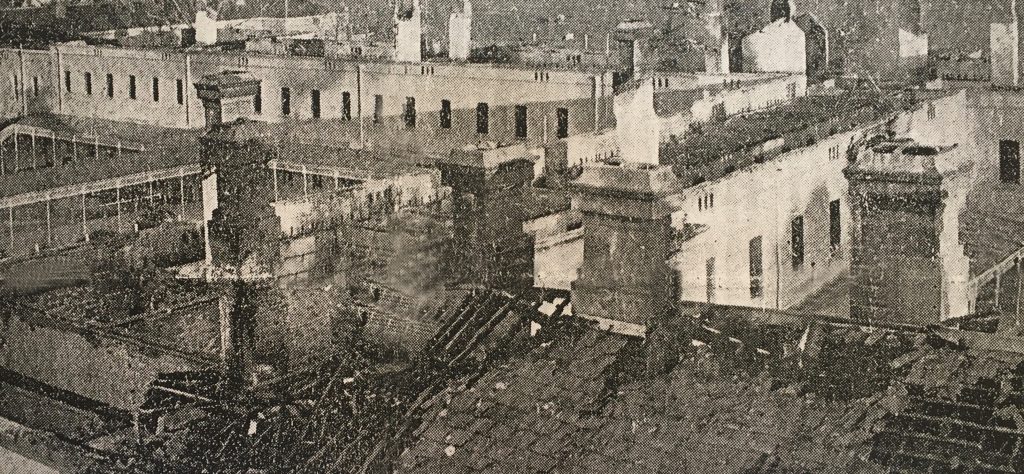

| The burnt-out parts of the two-storey male wing are left unrestored until 1954 when work begins to bring the wards back into use. While the lower section beside the Administration Office is renovated and rebuilt, the top storey of the rest of burnt out section is removed. The lower section is rebuilt to provide a new occupational therapy wing. A new prefabricated hospital and a larger male ward are added to the complex by 1957. |
1951- Sep

The Beechworth Bombers – red-hot favourites for the flag after thirteen wins during the season – win the nail-biting Grand Final, defeating Whorouly … by just one point! The Beechworth Football Club will end the season as Premiership winners again in 1956, 1961, 1974 and 1979.
1952 – Mar
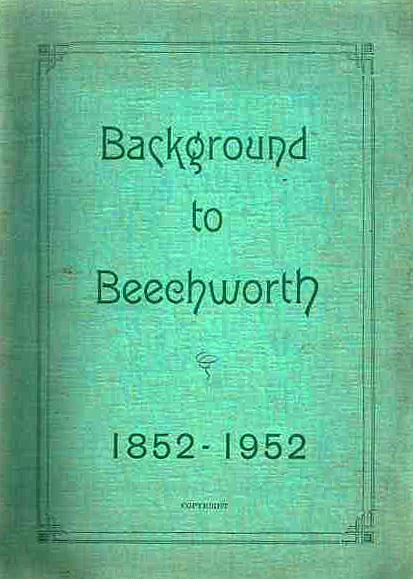
As the European settlement of Beechworth reaches its 100th year, the Beechworth Centenary Publicity Committee publishes the book ‘Background to Beechworth 1852 – 1952‘ compiled by Roy Collington Harvey.
1952 – Apr
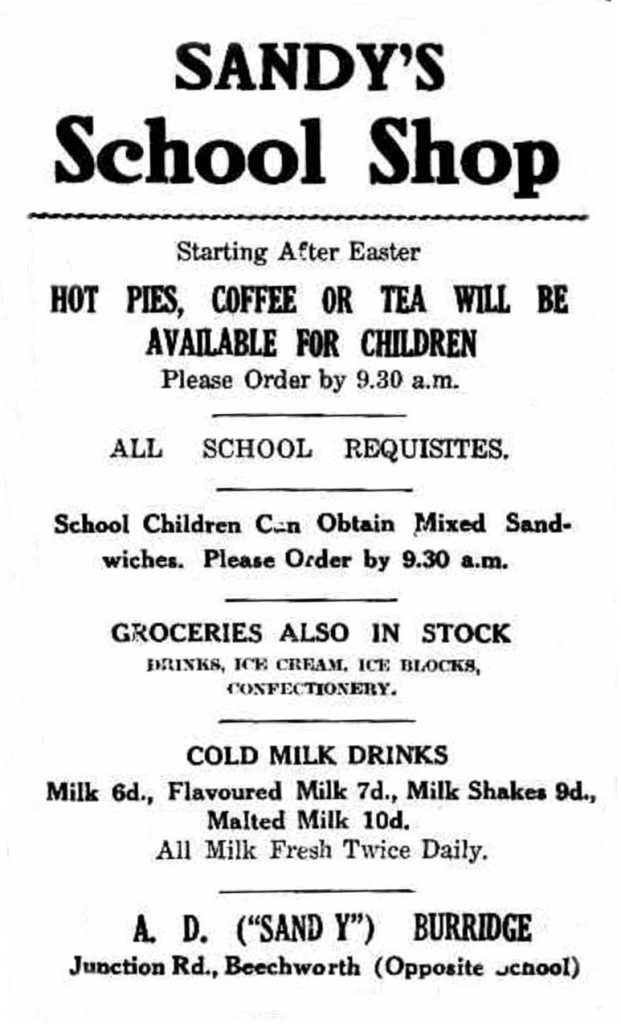
Alan Douglas ‘Sandy’ Burridge runs the popular School Shop on Junction Road, opposite the Beechworth Higher Elementary School. Providing lunches and treats for the children, it also has a small range of groceries and school books.
| Alan ‘Sandy’ Burridge and Freddie Jensen become well known in Beechworth and the surrounding district for their work as builders in the 1960s. |
1952 – Jun 13

The passenger train – that runs the service along the Ovens Valley Railway to Bright Railway Station – makes its final journey. The trip to Bright, while exceedingly picturesque, has become slow and dangerous because of the state of the track. The Ovens Valley Railway can no longer compete with highway and the continued rise of the motor car.
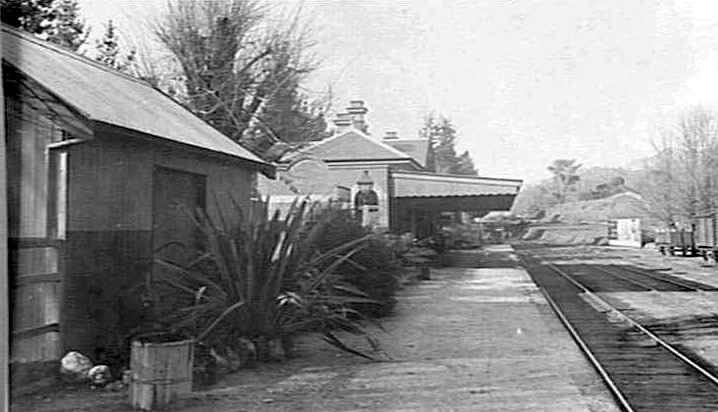
1952
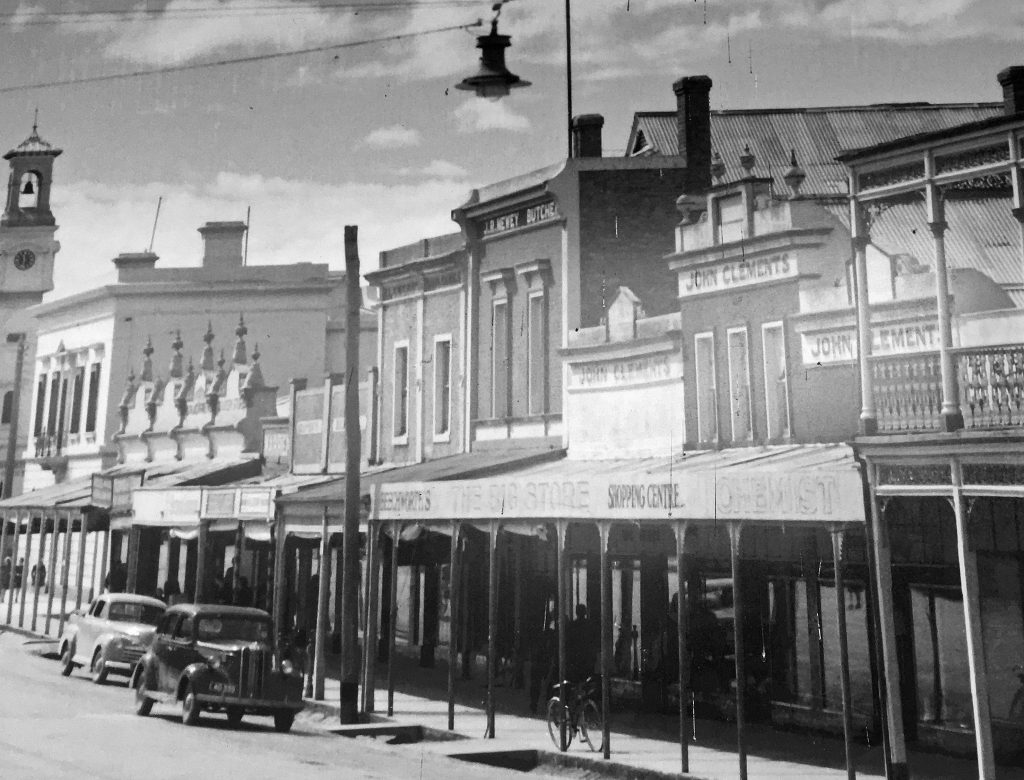
After running his popular Beechworth Freeman’s Bargain Draper store at 48 Ford Street since 1938, Michael ‘Micky’ Isaac Freeman purchases the largest shop in Beechworth at 52-58 Ford Street, which has been operating as a Foy & Gibson branch store since 1950. Before that it had been run by Arthur A. Niemann and previous to that it was well known as John A. Clement’s The Big Store. Freeman makes some alterations to the building and opens “Freeman – the Bargain Draper”.
| The large new Freeman store has four departments – 1) Women’s, children’s and baby wear, haberdashery cloth and wool, 2) Men’s and boy’s wear and shoes, 3) linoleum, carpets, furniture, kitchenware, suitcases, and 4) bedding and mattresses. Freeman’s wife Herta instigates seven-days-a-week trading at the store, decades before it is widely practiced. |
1952 – Oct
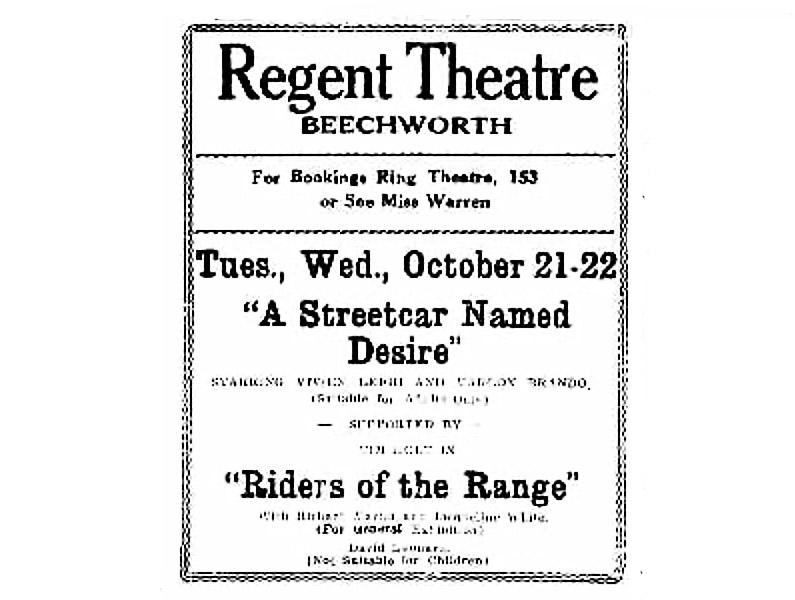
Beechworth’s Oddfellows Hall on Loch Street has been operating as the Federal Hall and the Federal Theatre since the turn of the century, but is rebranded as the Regent Theatre in the 1940s. The films screened at the theatre will prove popular with locals for many years until the arrival of television in the area in the 1960s when the theatre becomes reception centre and dance venue known as The Regency Room.

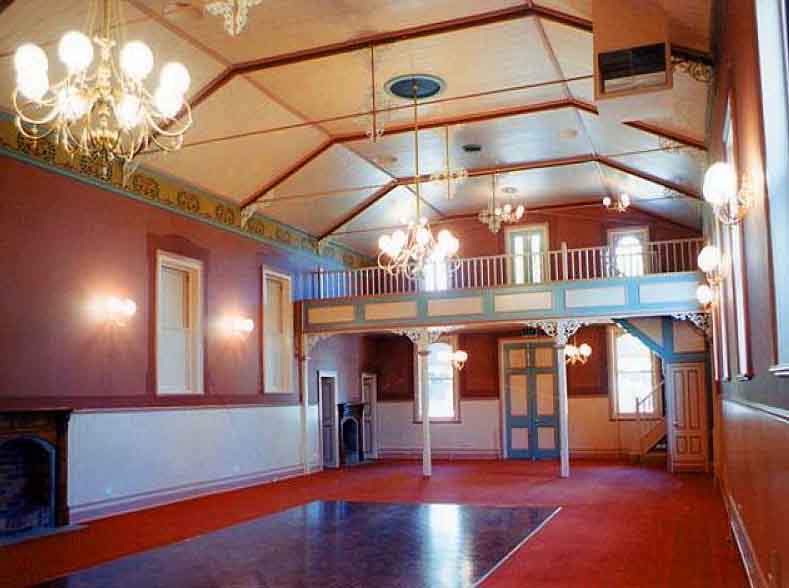
1953 – Jun 2

Beechworth residents turn out in big numbers to celebrate ‘Coronation Day’ as 27 year old Elizabeth Windsor is crowned the new Queen, becoming the sixth Queen to be crowned at Westminster Abbey.
1953

The Government purchases the late Donald Fletcher’s beautiful home and property Myrla – built in 1875 – to be used by the Mayday Hills Mental Asylum. The acreage on Fletcher’s Hill is used to run dry cows for the farm, and the grand residence is used as private accommodation for senior staff.
1954 – Apr 18
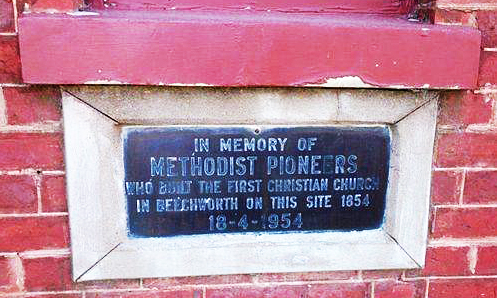
A commemorative plaque is unveiled in memory of Beechworth’s Methodist Pioneers at the centenary of Beechworth’s first Methodist Church (the Wesleyan Chapel) which opened in December 1854. The “basic, dark wood building with a high-pitched roof and relatively squat walls and windows” (below) stood at 26 Ford Street, where the current 1857-built Methodist Church now stands.
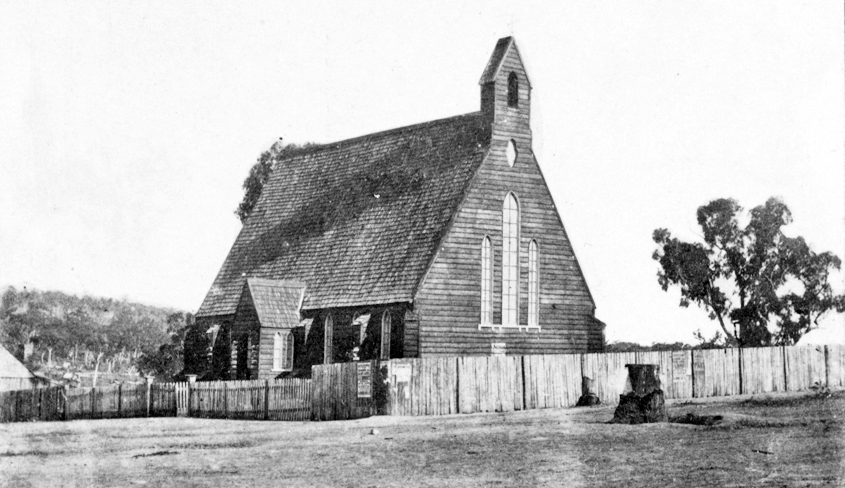
1954
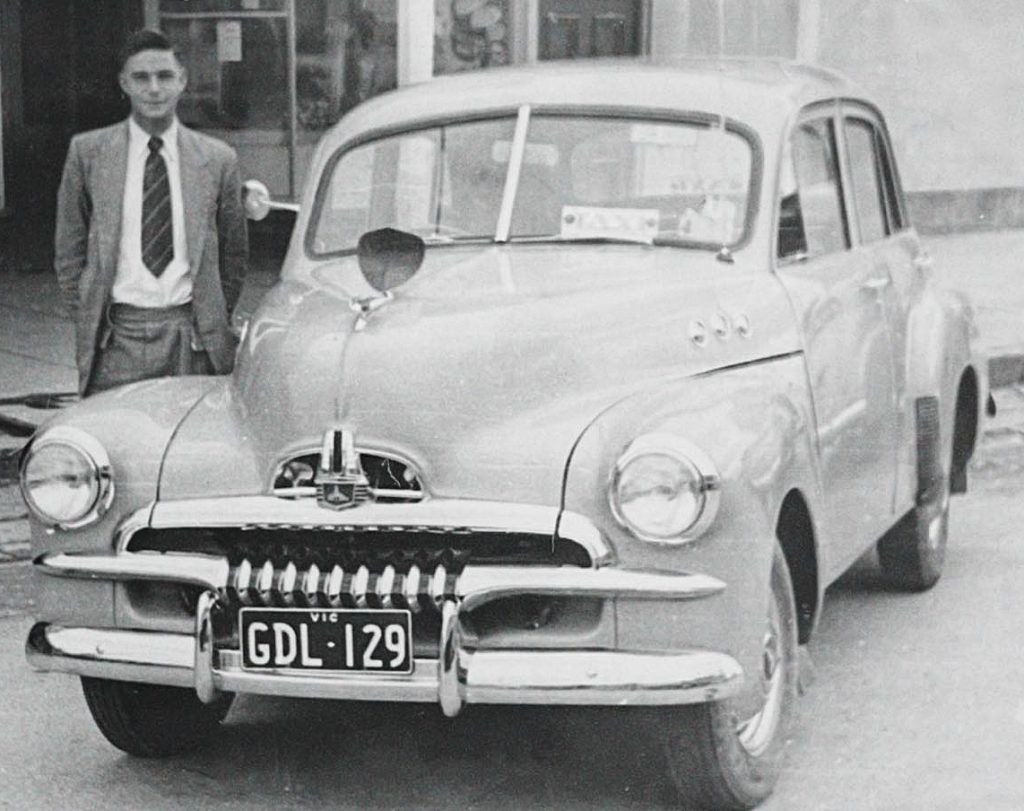
After purchasing Tom Parkinson’s Taxi Licence, 20-year-old Graeme Smart starts his own taxi service in Beechworth, using his own car – a classic 1948 Chevrolet. He soon adds a 1954 FJ Holden (above) which will become one of the six taxis servicing Beechworth. In 1957, Graeme will purchase three more taxi licences from Leo Kavanagh, giving him a total of four licences in the area. Graeme and his wife Lesley will go on to run their taxi business in the town for the next 20 years, juggling their other Beechworth businesses including (from the late 1960s) the Esso Service Station and petrol depot on Ford Street along with their transport and taxi services.

1954 – Jul 1

Due to a gradual decline in freight and passengers, and damage caused by a recent bushfire to a railway bridge near Yackandandah, the Victorian Government makes the decision to close the Beechworth to Yackandandah section of the railway line after 63 years in operation. The last train between Beechworth and Yackandandah – with a stop at Wooragee (below) – runs, and the following day the rail service is officially discontinued.

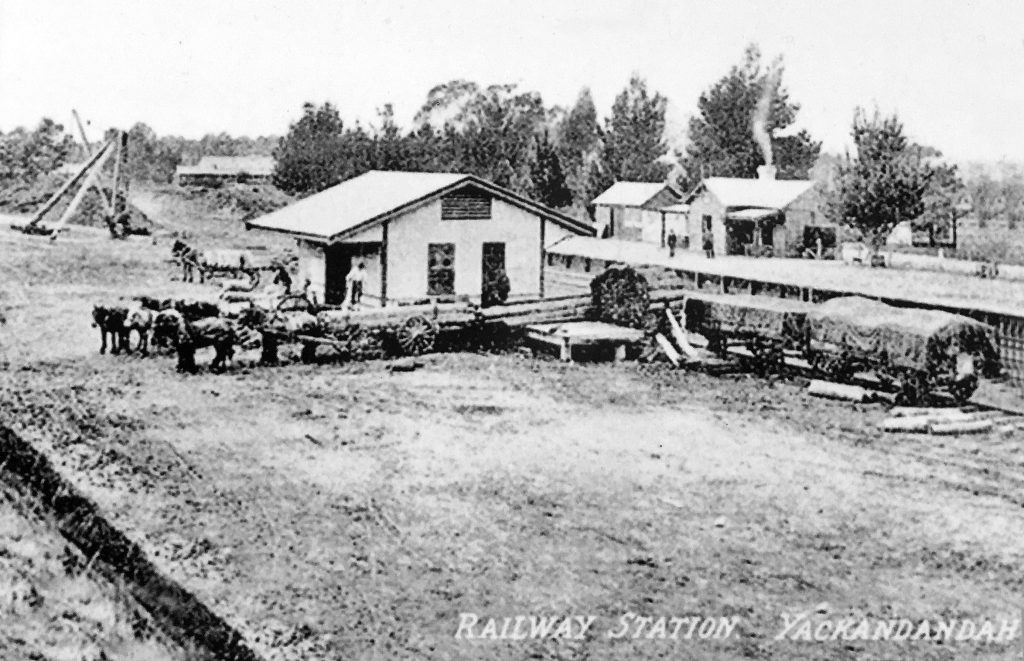
1954 – Jul
After raising almost £700 during Beechworth’s Centenary Celebrations in 1952, the Beechworth Centenary Celebrations Committee holds its final meeting where it states that any profits must be spent on suitable memorial to the town’s pioneers and agrees to hand the funds to the Beechworth and District Progress Association who will use the money to erect three ‘Centenary Memorial Monuments’ in the town.
| The ‘Beechworth Centenary Celebrations Committee’ and its president A.J Wallace, initially discuss using the money raised to restore of the Old Hospital frontage in Church Street as a memorial, but the estimated cost of restoration – £1,625 – is beyond their finances. There are other proposals considered – the Public Works Department’s engineer favours restoring the Old Swimming Baths, while the both the ‘Beechworth Brass Band’ and the ‘Beechworth Boy Scouts’ are keen for the money to be used to build halls for their organisations. |
1954
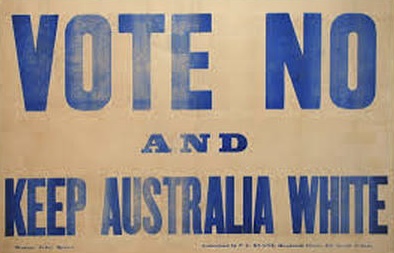
Following migration from Europe to Australia after the Second World War, many have made their way to Beechworth. In keeping with the ‘White Australia Policy’, nearly all are from European countries and by this year, Beechworth has 170 migrants from the UK, 102 from Hungary, and 63 from Germany.
| The ‘Immigration Restriction Bill’ – better known as the ‘White Australia Policy’ – introduced in June 1901 by Australia’s first Prime Minister Edmund Barton, will finally be dismantled by Gough Whitlam’s Labor government in 1973. |
1954
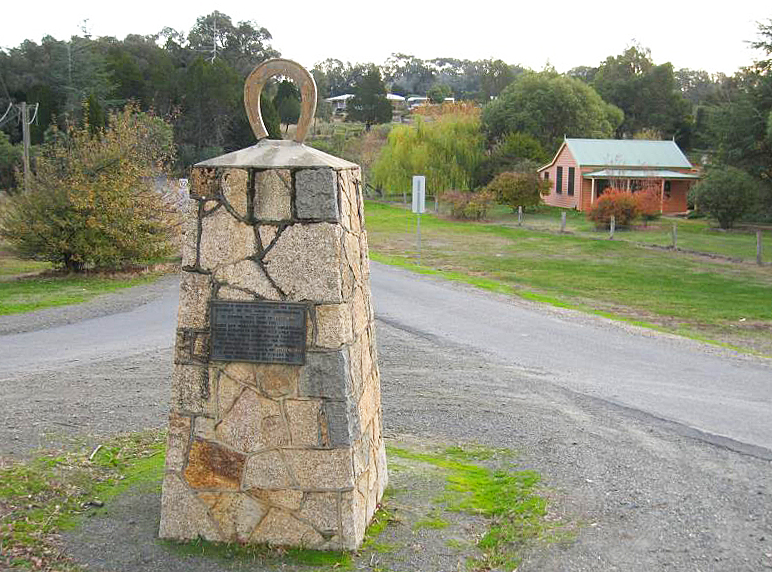
The Beechworth and District Progress Association build and unveil three monuments celebrating Beechworth’s goldrush era. A ‘Golden Horseshoe Monument’ – featuring gilt horseshoes on top of a cairn – is erected on the perimeter of Beechworth, at the entrance to the Gorge Road on the road that leads north to Yackandandah, Wodonga and Albury. A second is erected in the middle of town in front of the Post Office “in memory and in honor of the pioneers who founded this town”. This monument is topped by a gilt gold pan, shovel and pick. The third monument stands just over the Newtown Bridge at the entrance to Beechworth just 80 yards from the spot where gold is first discovered on Spring Creek.
1954

The ‘Ovens Benevolent Asylum’ (opened in 1863) – which had become the ‘Ovens Benevolent Home’ in 1935 – is now renamed again, to be known as the ‘Ovens and Murray Home’.
1954

Established in 1930, Cameron William McBean’s Reliance Garage on Ford Street – a few doors south of the Commercial Hotel – continues to serve Beechworth, selling ‘Mobil’ fuel and being Beechworth’s ‘Morris’ car dealership.

1955 – Jun 30
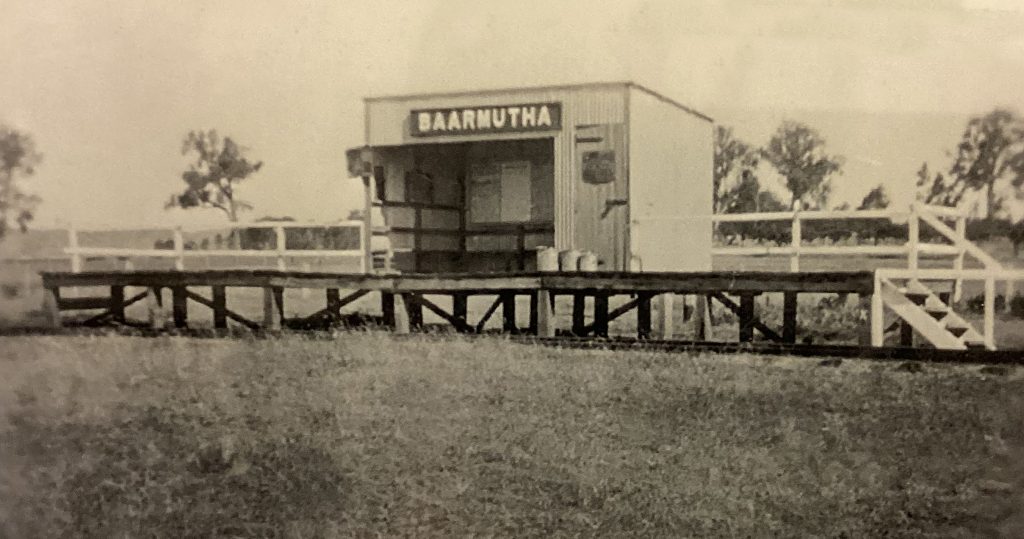
On the railway line between Everton and Beechworth, the Baarmutha Railway Station is finally closed. The Baarmutha Post Office will close 13 years later in 1968.
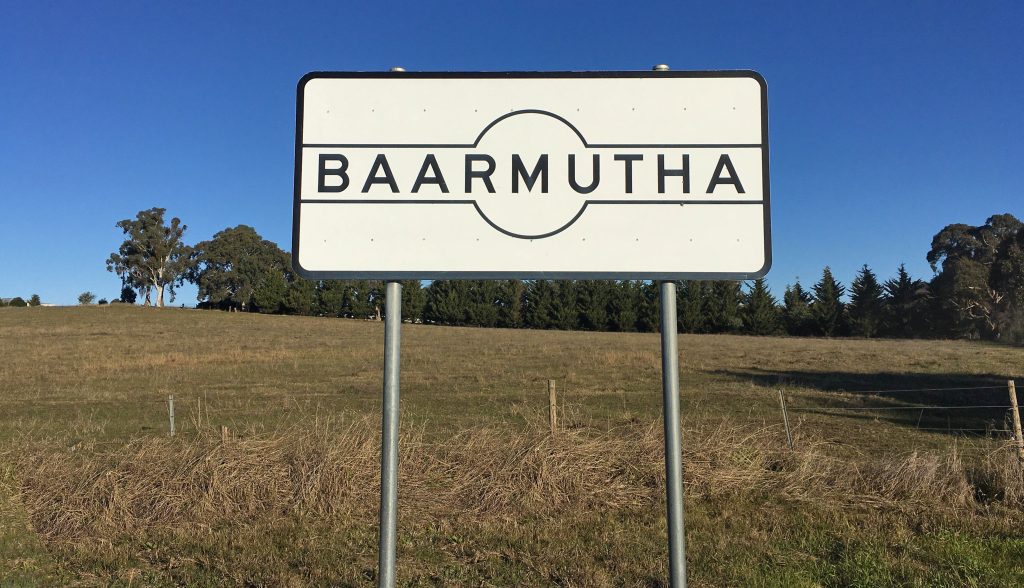
1955 – Jul 14-15

Beechworth is experiencing heavy rainfall, with 228 points of rain recorded by sunrise. 60-year-old Thomas Alexander David Fuller – a former World War One soldier who has been employed as an Attendant at the Beechworth Mental Hospital since 1940 – sets off for work in thick fog at 6.40am. The Beechworth Milkman, 40-year-old Clarence Edwin Boys, sees Fuller leaving the home on Crawford Street that Fuller shares with his wife Florence and offers him a ride to work “to keep dry”, but Fuller insists upon walking. Thomas Fuller does not return home from work at his usual time of 8.00pm, and when he is still not home by midnight, Florence goes to the Beechworth Police to report him missing. After making a phone call, Constable Thomas Francis Naughtin quickly ascertains that Fuller had never arrived for work the previous morning and had been marked “off for the day”. In the dark (and rain) Constable Naughtin walks the track from Kerferd Road and up around the dam to the Mental Hospital but finds no trace of Fuller. At 7.00am, with rain still falling steadily, Constable Naughtin, together with Clarence Boys (the Milkman) resume the search, but still find no sign of him. By 9.30am a search party is organised and during the search Constable Herbert Crossman finds Thomas’s felt hat in the sewerage dam and orders that ‘dragging operations’ should commence in the murky water. At 2.00pm, Edward Walter Huggins – another Attendant from the Beechworth Mental Hospital – is in a rowboat on the dam using a grappling hook when he finds Fuller’s water-logged and lifeless body in about 6 feet of water. The spot is just 3 feet from the muddy path on the southern side of the dam, and Fuller is still fully dressed in his attendant’s uniform, heavy rubber soled shoes and a full-length Gabardine coat. There are no visible injuries. Two days later, during a postmortem conducted by Dr William Leembruggen, a small torch and a watch are found in the dead man’s coat pocket. The watch had stopped at 6.55. Constable Naughtin shakes it, and the watch starts again. Thomas Alexander David Fuller is buried at the Beechworth Cemetery.
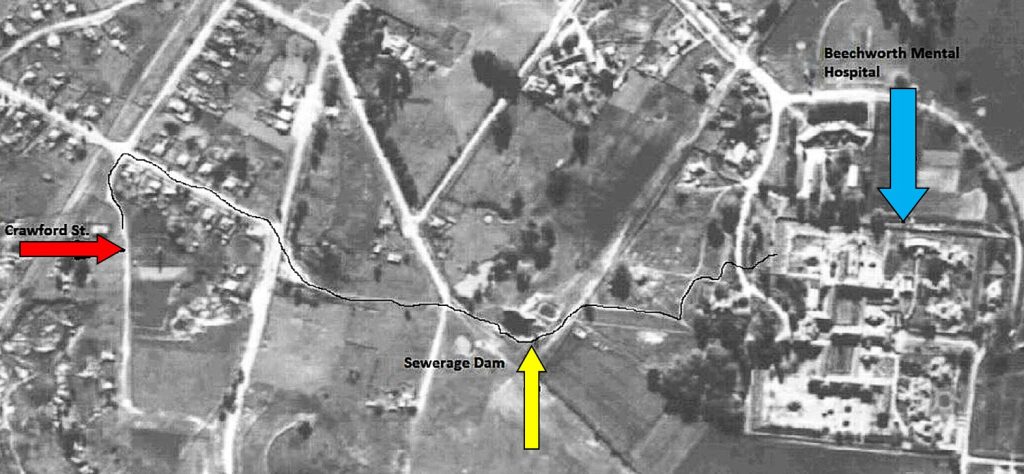

| In 1956, there is a suggestion by the ‘State Accident Insurance Office’ that Fuller’s death may have been a suicide as he had been admitted to the ‘Heidelberg Repatriation Hospital’ from the 23rd December 1954 for four weeks suffering from ‘War Neurosis’. He had then been admitted to the ‘Ovens and District Hospital’ in Beechworth as a repatriation patient, suffering depression in May 1955 and, following treatment, was discharged at the end of June before resuming duty at the ‘Beechworth Mental Hospital’ on the 4th July 1955. However, following the insurance company’s investigation, Fuller’s death is deemed ‘accidental’, and his widow’s insurance claim is honoured. |
1955 – Jul 20
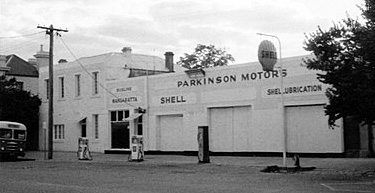
Thomas ‘Tom’ Parkinson dies at the age of 67. His 42-year-old son Donald Roy Parkinson takes over the running of the busy Parkinson Motors and Shell Petrol Station on Ford Street. Tom Parkinson had established the first Wangaratta to Beechworth Motor Car Service in December 1930.

1955
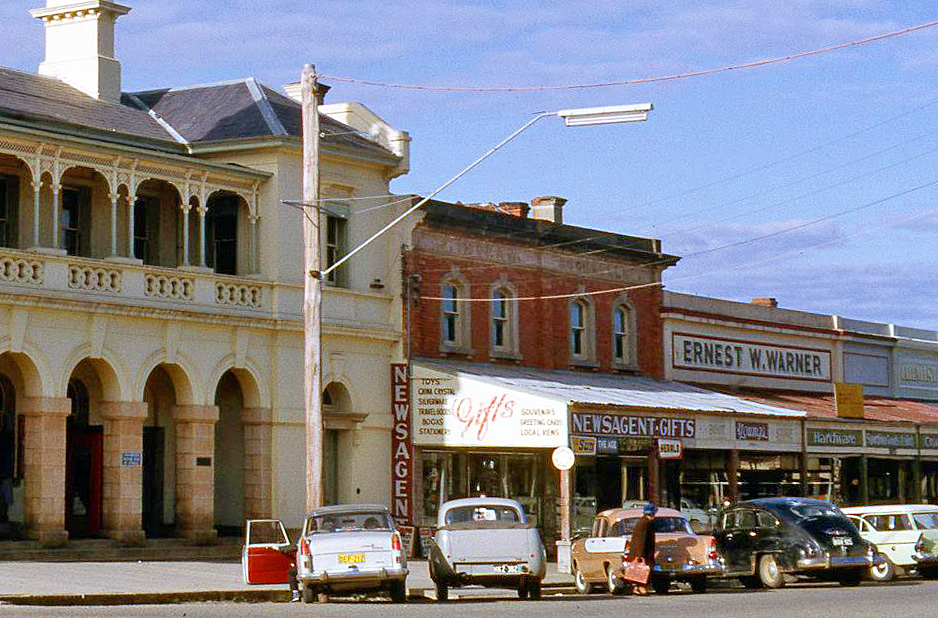
34-year-old Ernest ‘Ernie’ Wellington Warner purchases the former Niemann’s Hardware Store at 24 Camp Street, in the building that had once been the Post Office Hotel (delicensed in May 1941). He will run Warner’s Hardware Store for the next 24 years, retiring after the death of his wife Eileen in 1979.

| As a 16-year-old in 1936, Ernie began working at the ‘Andrews & Son Hardware Store‘ at 21 Camp Street (where the ‘Beechworth Bakery’ now stands) gaining his knowledge of the hardware business. He is a third-generation inhabitant of Beechworth. His grandfather arrived as a prospector, and his parents, Charlie and Ethel, married in Beechworth and established a sheep/wool farm, which passed to Ernie’s brother Hubert and his wife Dorothy. |
1955
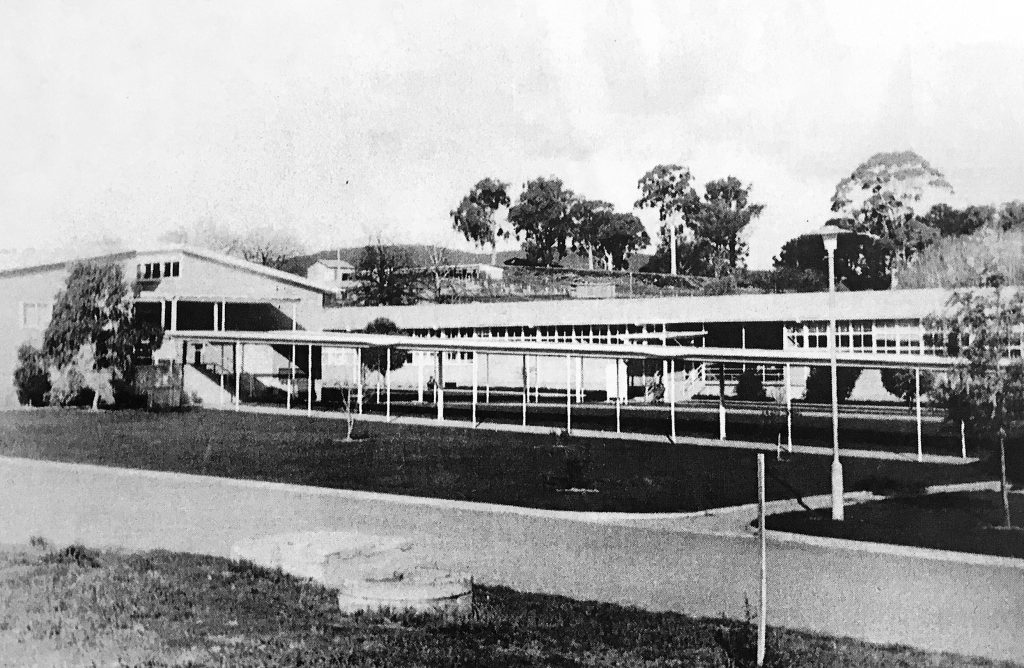
An aluminum ‘relocatable’ building – initially destined for the town of Mt Beauty – is diverted to the Mayday Hills Mental Asylum to provide urgently needed hospital facilities. It will be fitted out as a well equipped operating theatre, along with a dental suite. The building is bolted together on site in Beechworth and becomes affectionately known as ‘The Bristol’ building, having been manufactured in Bristol in England. Patient accommodation at the Asylum is also dramatically improved and increased when six new “High School” style buildings are erected to replace the fire damaged Male Ward.
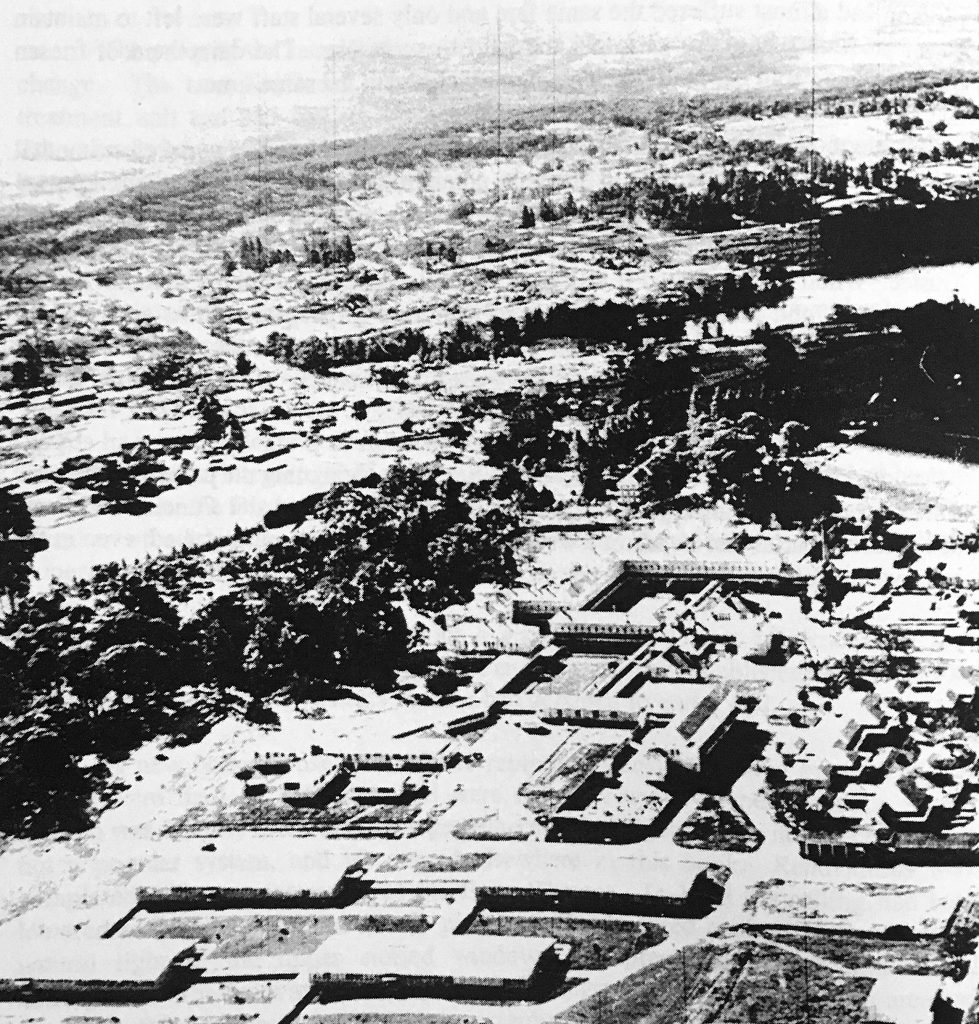
1955 – Nov

The Regal Theatre opens at 121 Bridge Street, Benalla. It will close as a cinema in October 1980 and converted into the Benalla Skating Rink.
1956 – Sep
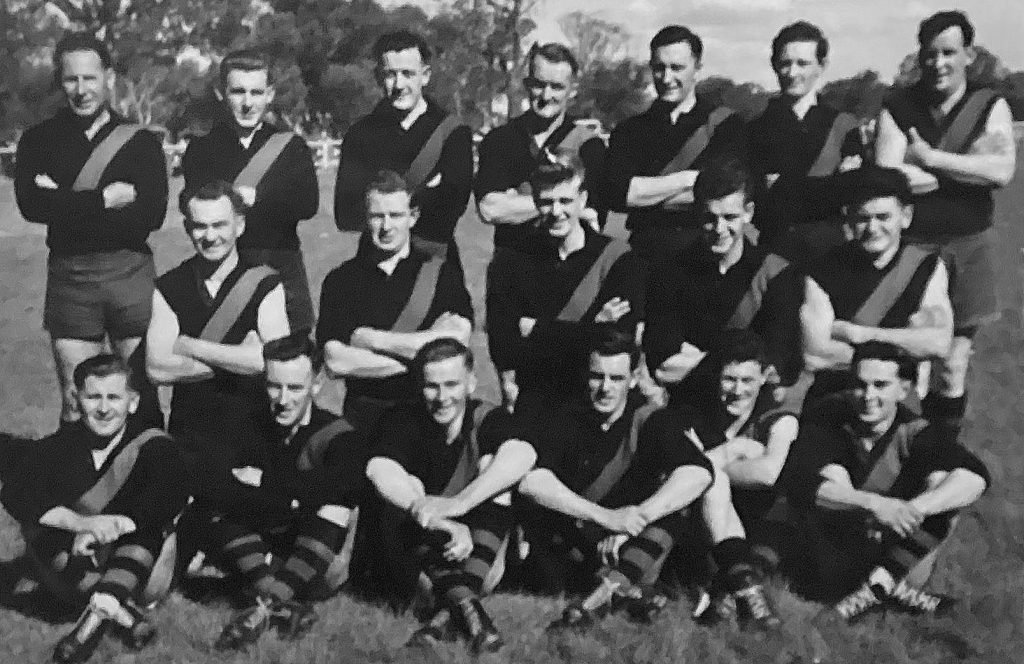
Playing in the Ovens & King Football League, the Beechworth Football Club win the Premiership, under Captain/Coach Timmy Lowe (above, front row, third from the right), defeating the team from Milawa – Beechworth’s 9 goals, 17 points – 71, to Milawa’s 6 goals, 5 points – 41.
| The same year, for the first time, Netball is played alongside Football. The five-team 1956 competition is made up of sides from Beechworth, Tarrawingee, Moyhu, Bogong and Milawa, with the grand final won by Milawa. |
1957

After almost 100 years, extensions are made to the original 1860 cell blocks at Beechworth Gaol. The new cells (built in red brick – above) increase the capacity of prisoners from 75 to 105, with the average daily number of prisoners sitting at 70 although, at times, this number could exceed 105. While this building work is being done, a swimming pool is added in the area formerly known as the ‘Radiating Airing Yard’ or exercise yard (below).
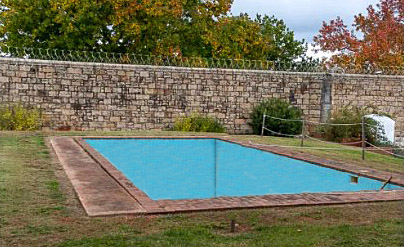
1957
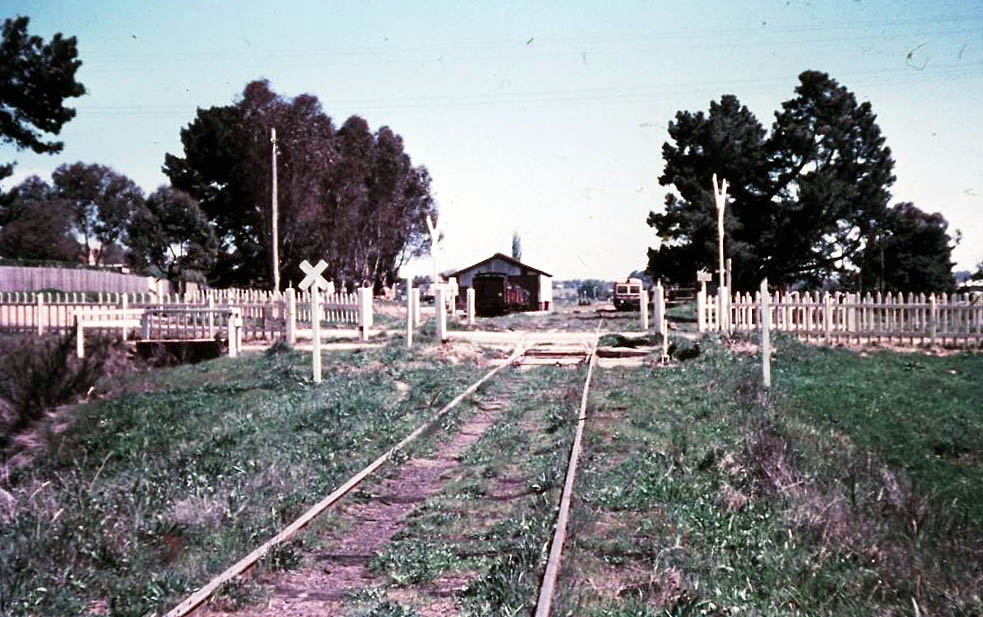
While the Yackandandah Railway Station has closed, along with other stops on the way between Wangaratta and Beechworth, the railway station at Beechworth continues to provide regular travel and freight business.

1957 – Jul 1

Michaelis Hallenstein and Company of Footscray (below), and their subsidiary Associated Leathers Ltd, take control of operations at Zwar Bros Pty Ltd as Keith Zwar’s health continues to fail. He sells them the Tannery with a moral condition of sale that the operation continue in Beechworth. Keith Zwar passes away 4 months after the sale on November 7th 1957.

1957 – Jul 23
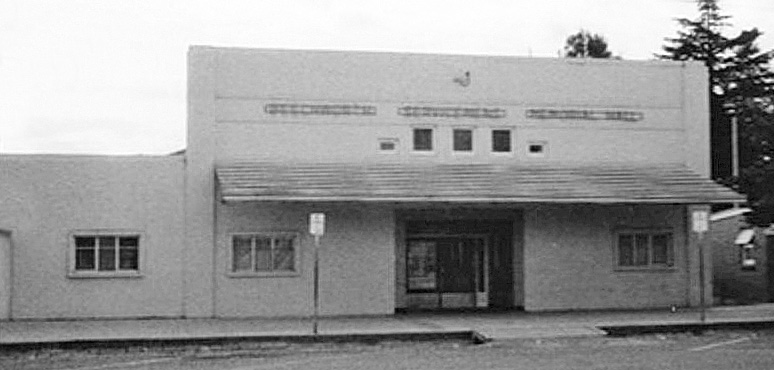
To much excitement, the Beechworth Servicemen’s Memorial Hall opens, with local press reporting “the crowd was so dense that dancing was almost impossible.” The building on Ford Street had formally been the Beechworth Technical School but has been converted after the Beechworth RSL Women’s Auxiliary raise £20,000 for designs, alterations and improvements of the old wooden building. Changes include extending the building further east, the addition of a new kitchen, and a ‘Committee Room’ added to the west side. The Beechworth Servicemen’s Memorial Hall is originally managed by the Beechworth Sub-Branch of the RSL who are officially the owners of the Hall and the land surrounding it.
| The following year, Corowa architect Charles MacKnight is engaged to design the addition of a separate RSL clubroom next door, and a greatly extended stage will be created in the hall, with a suite of dressing rooms below. In the 1990s, as the RSL membership is now small and they are not making enough money, they will relinquish control of the Memorial Hall to the Beechworth Council to be used for community events. |
1957

Now in his mid-70s, Frank Jarvis sells his Beechworth Taxi Company to Noel Collie. Jarvis had started running taxis around Beechworth and surrounds in his original ‘Flint’ automobile (above) in 1922!

| Frank Jarvis possesses a very deep rich bass voice and during most of his married life he sings regularly in Beechworth’s Methodist Church choir. Every Sunday night he sets off for church in a dark suit, his fob watch in the pocket of his waistcoat and a flower in his button hole (a very tiny rose whenever he could find one to pick). He is also a very good whistler for which reason his commercial competitors refer to him as “Birdie” in their advertisements in the local paper. |
1958

Additional cells are built (in red brick – above) at Beechworth Gaol increasing the capacity of prisoners from 75 to 105, with the average daily number of prisoners sitting at 70.
1958
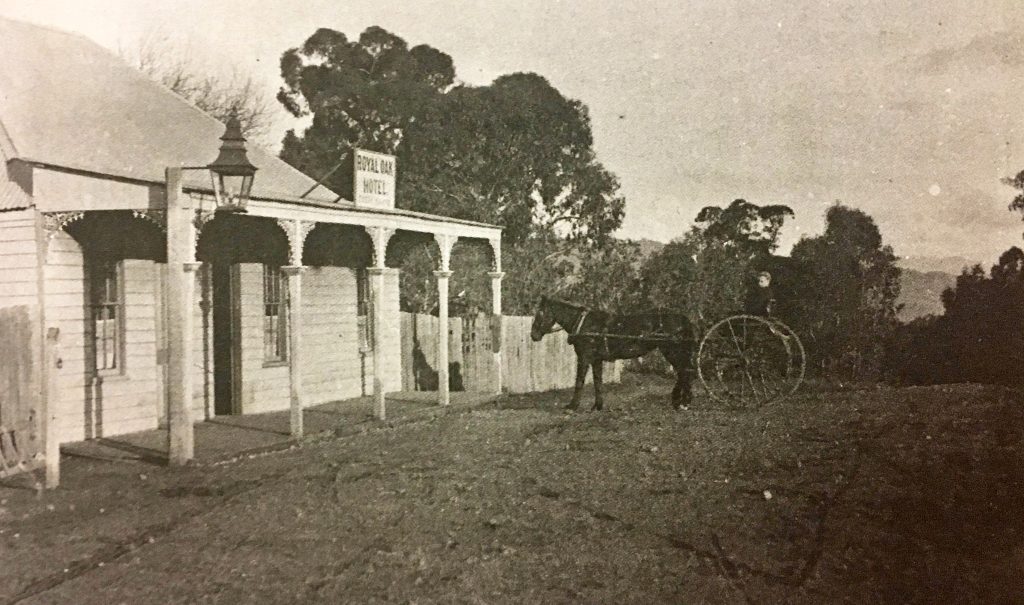
The Royal Oak Hotel is destroyed by fire. Built in the 1880s to service miners in the Three Mile District, it is originally known as The Gap Hotel as it sits at the top of Buckland Gap (on the road from Beechworth to Myrtleford).

1959

The popularity of Lake Sambell continues to grow. Named after Leslie Herbert Sambell, the lake is now a prominent feature of the town and tourist drawcard.
| Officially opened in 1928, Lake Sambell is further developed in the late 1930s, raising the banks by six feet to double its present area and to make the water cleaner. Another redevelopment in the late 1940s is made possible by the ‘Beechworth and District Progress Association’. It involves raising the banks a further five feet to provide swimming facilities and a paddling pool. |
1959
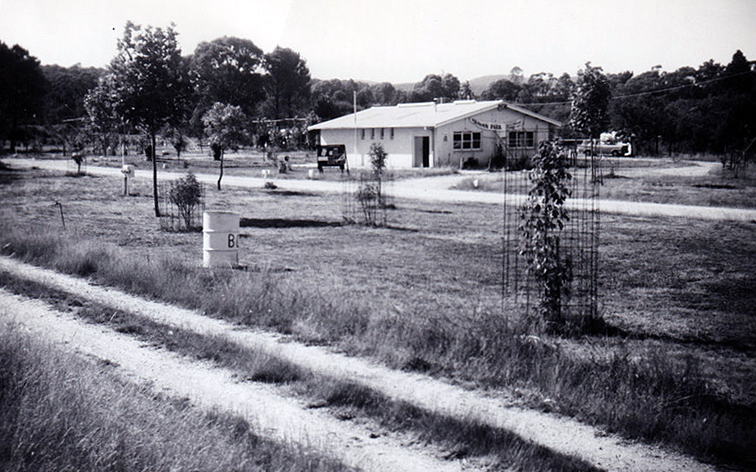
Due to the rising car ownership in Australia and the growing popularity of caravanning, the Beechworth Caravan Park is established on the old Beechworth Tip site at one end of Lake Sambell, and new shade trees are planted to beautify the area.


| Beechworth Shire engineer R.E. Carter advocates for improvements to the lake and the surrounding area in order to encourage tourism in Beechworth. Financed mainly by grants from the Tourist Development Authority, the Caravan Park is developed and in 1961 Lake Sambell is enlarged and a small section of the lake is cordoned off to create a freshwater swimming pool. In 1964 the lake embankment is raised to increase the surface water area from 28 to 37 acres while at the other end of the lake, fronting Albert Road, the reserve will eventually feature a Chinese garden which includes several ponds honouring the district’s Chinese gold rush pioneers. An artificial sandy beach, barbecue/picnic area, floating diving platform and a small jetty will also be added around the lake. |
1959

Wangaratta, with its population now at 13,500, is officially proclaimed a ‘city’. By the mid-1970s Wangaratta’s population exceeds 17,000 and by the 2000s it has reached 28,000.
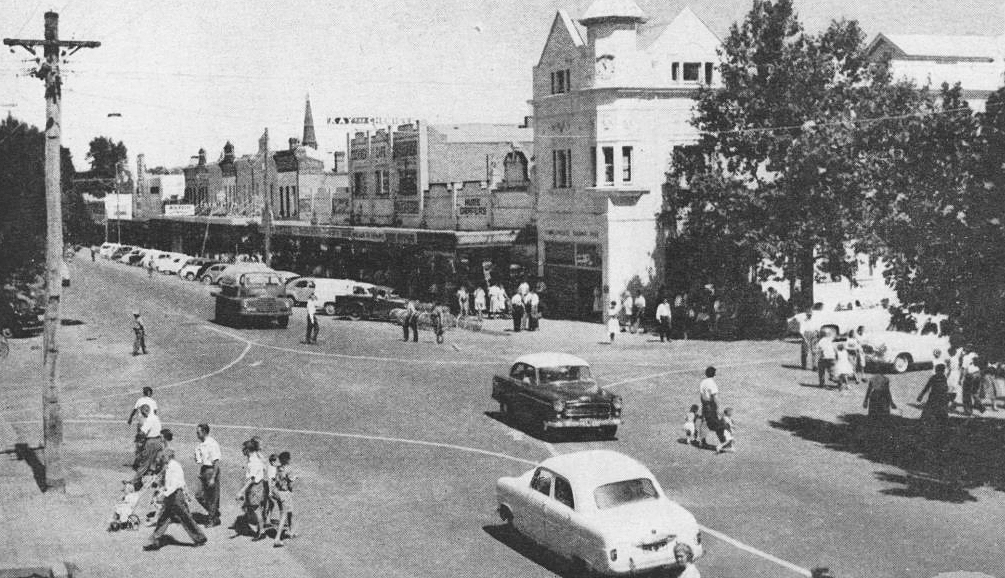
1959

The Lions Club of Beechworth is established, as part of Lions Clubs of District 201V6 – Australia. One of the foundation members is Kevin Costello, Principal of Beechworth High School. The Lions Club of Beechworth will go on to instigate projects like upgrading the Wangaratta Road rest area (to transform it into an attractive stop for locals and travellers), a Junior Public Speaking program for local primary school students, and improvements along the Lions Memorial Walk. The first Lions Club is formed in Lismore, NSW in September 1947, with the club growing into Australia’s largest service club organisation.
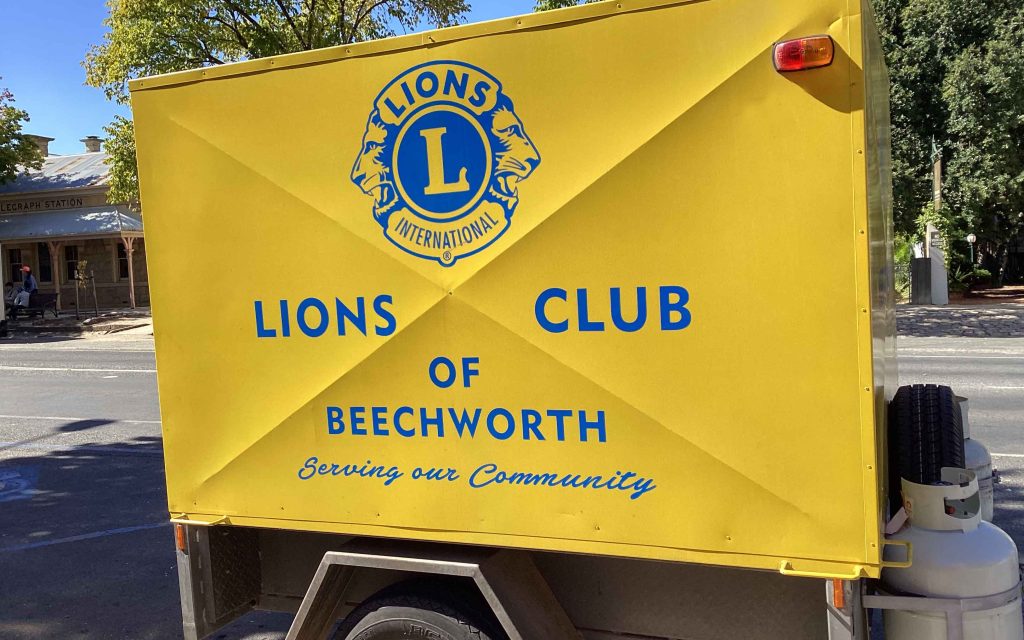
| The ‘Lions Club of Beechworth’ is instrumental in organising a series of annual parades – known as the ‘Golden Hills Festival’ – between Christmas and New Year (from 1960 until 1966), which will grow into the modern ‘Golden Horseshoes Festival’ (see entry further below). |
1959 – Sep 16

35 km from Beechworth, Princess Alexandra of Kent – first cousin of Queen Elizabeth II – is in Wodonga to officially open the Pollard Arch on the causeway over the Wodonga Creek between Wodonga and Albury. The two boomerang shaped sides of the structure come together to form the arch, which is named in honour of Charles Pollard, former President of the Wodonga Shire Council and a foundation member of the Wodonga Show Society. The arch stands on the spot that marks the border between New South Wales and Victoria, and will later feature an illuminated sign where the two boomerangs join, stating “Wodonga, Victoria” (below). It stands 29 metres wide and 15 metres high and is constructed by Doug Delarue at a cost of £1,230. When plans are later made to widen and duplicate the road, the Pollard Arch is removed from the causeway and rebuilt at the Wodonga Racecourse and Showgrounds in 1983.
| In 1961 the causeway will be officially named the ‘Lincoln Causeway’ in honour of Wodonga-raised athlete Merv Lincoln who represented Australia three times – at the Olympic Games in Melbourne in 1956, the Commonwealth Games in Cardiff in 1958 and the Rome Olympics in 1960. |

THE STORY CONTINUES IN THE 1960-1999 TIMELINE